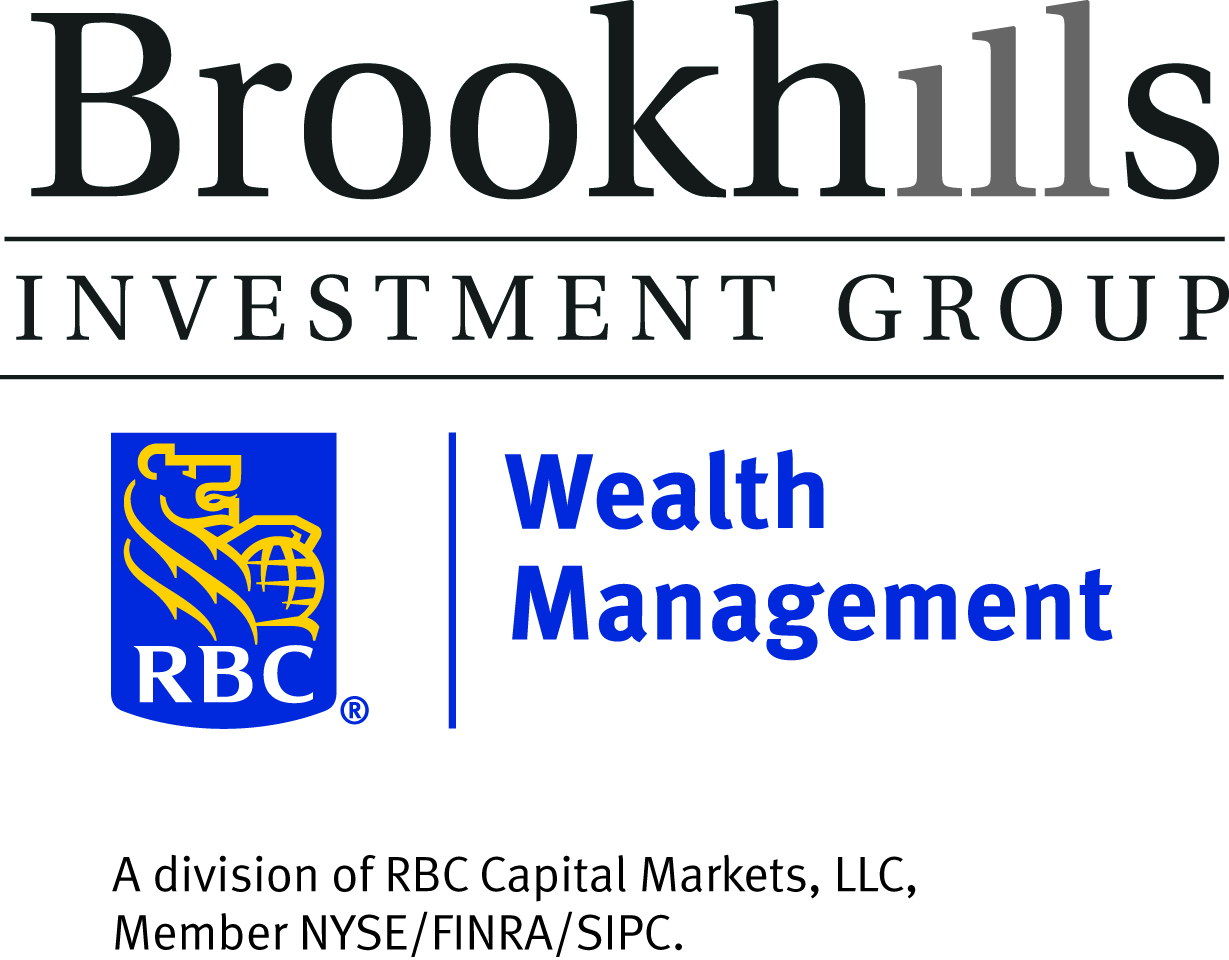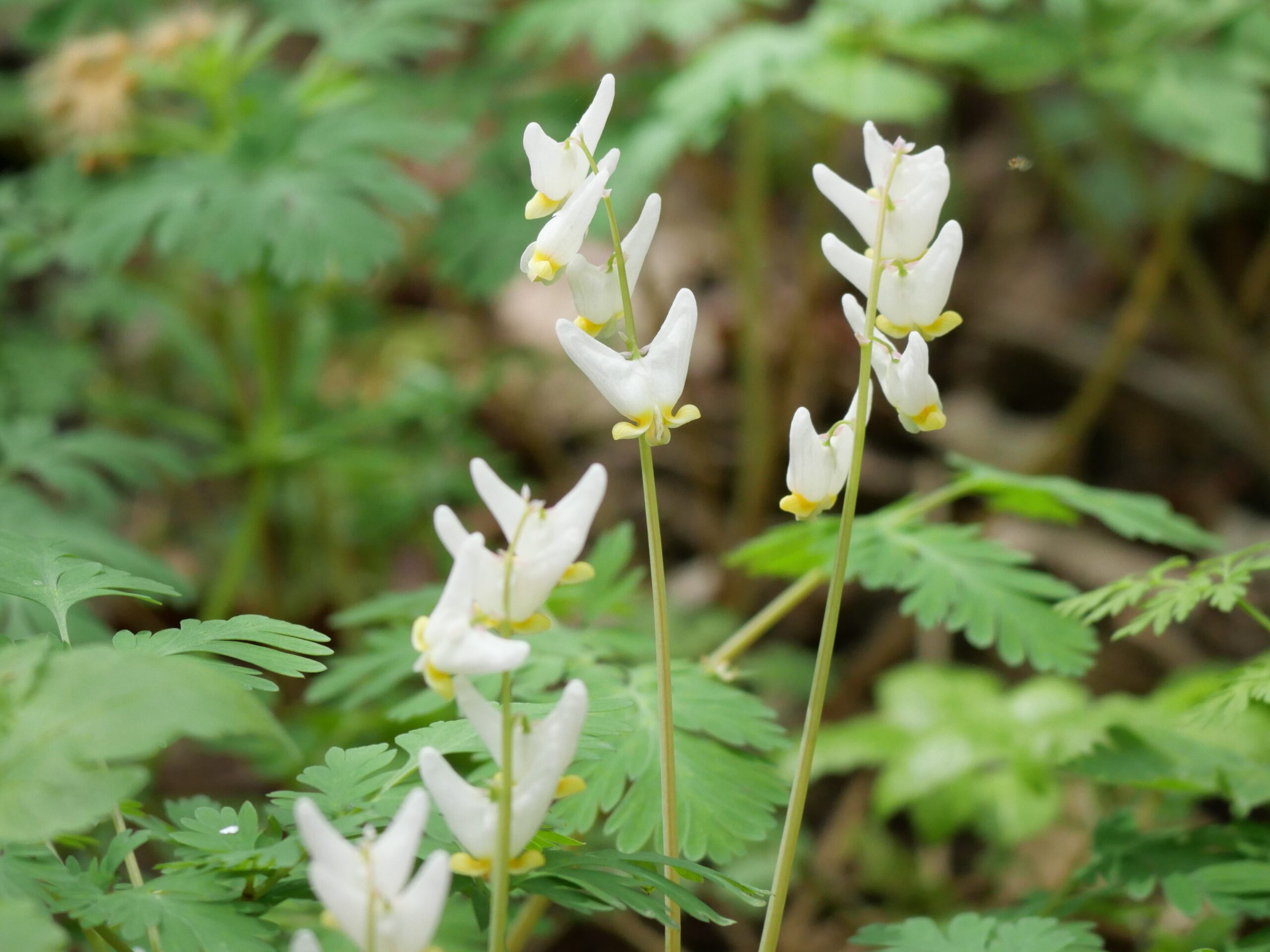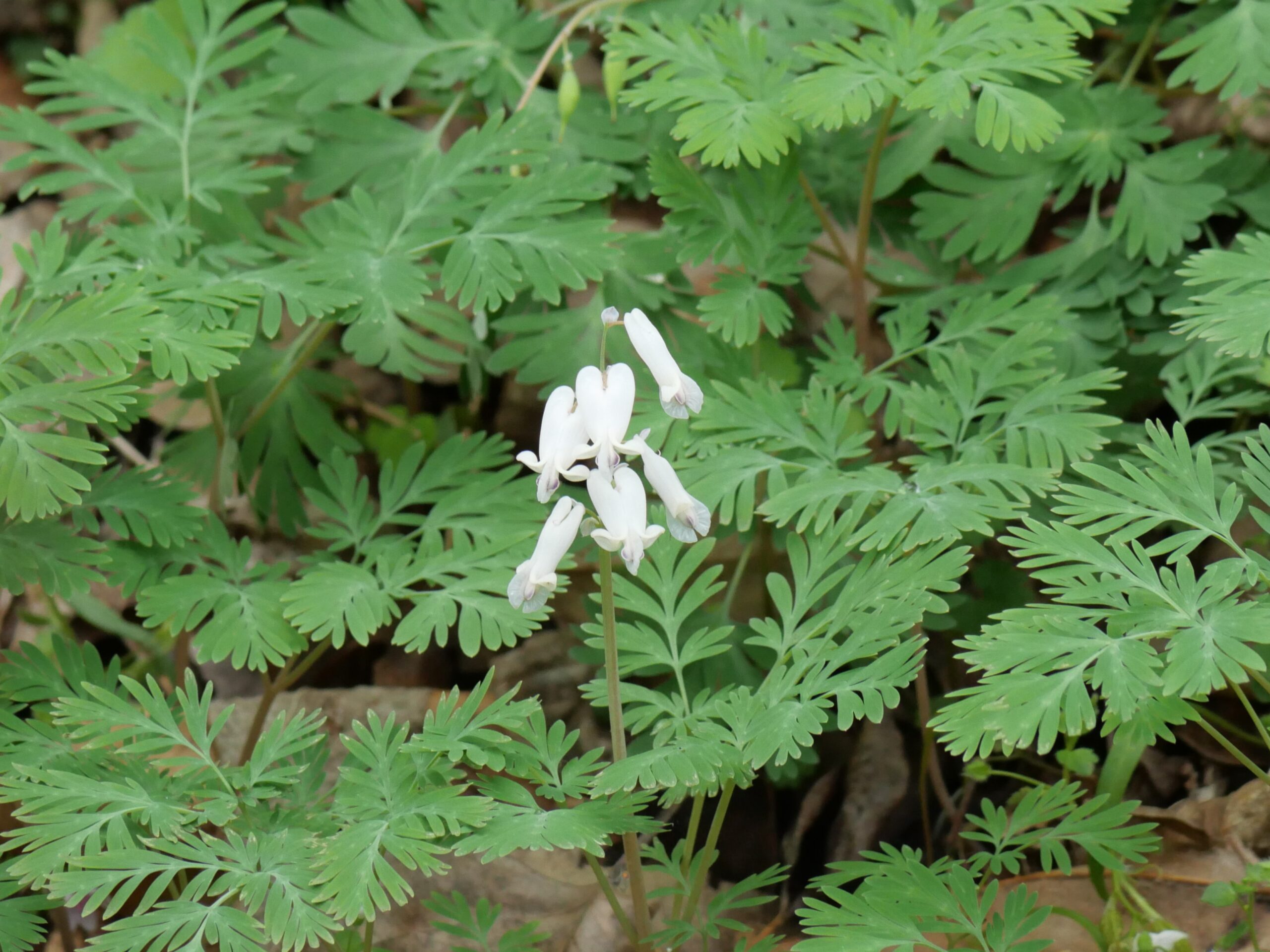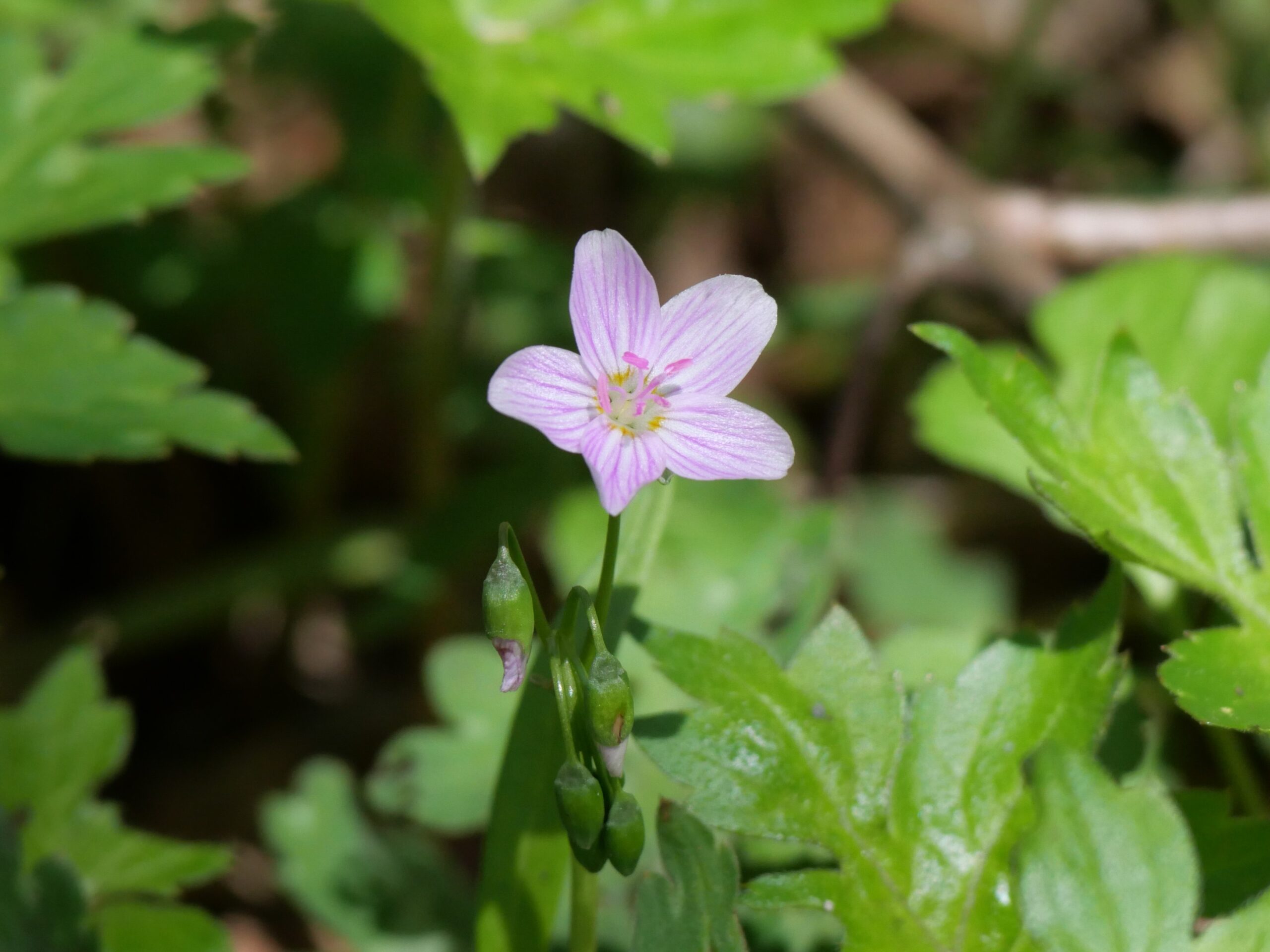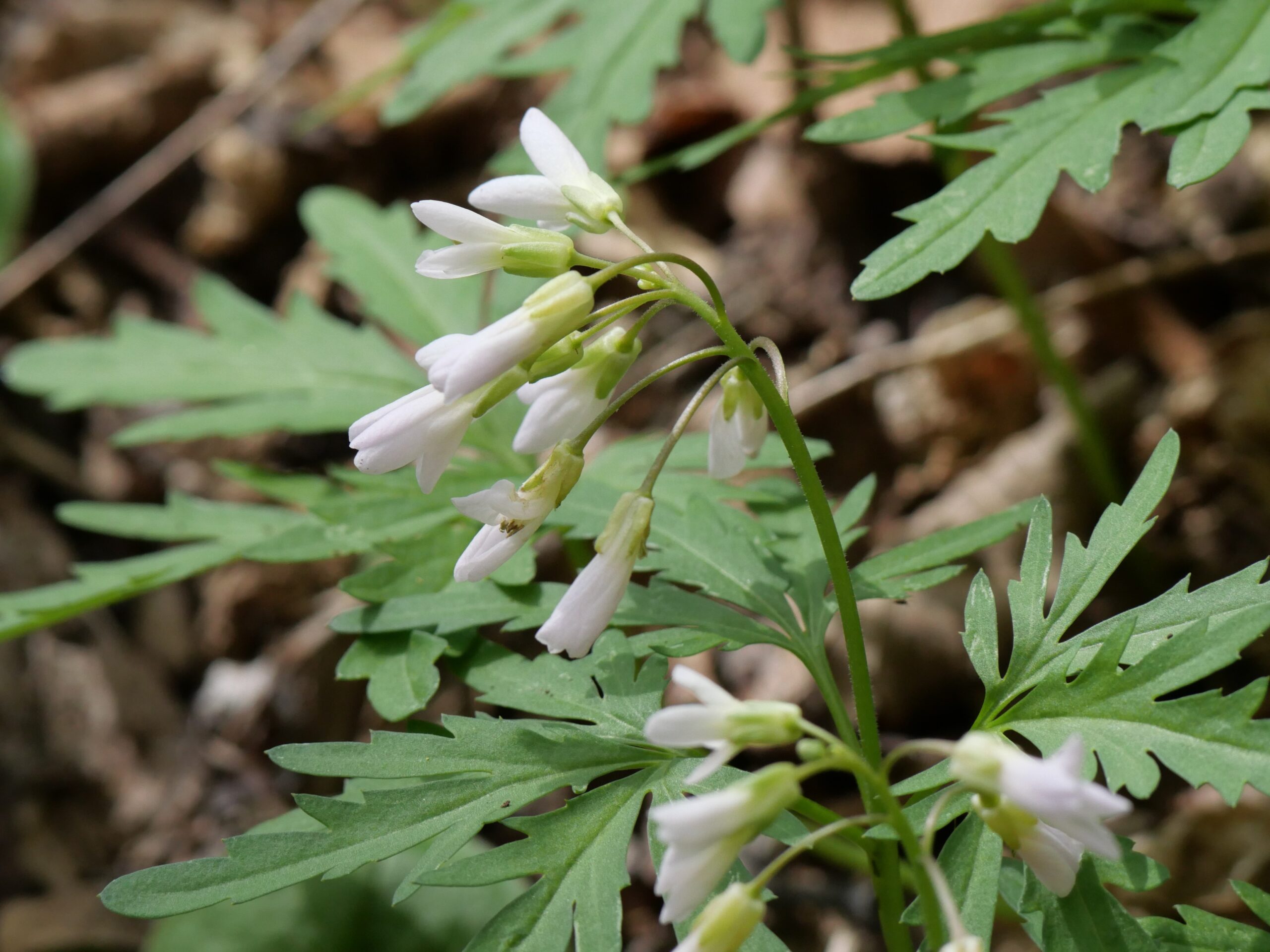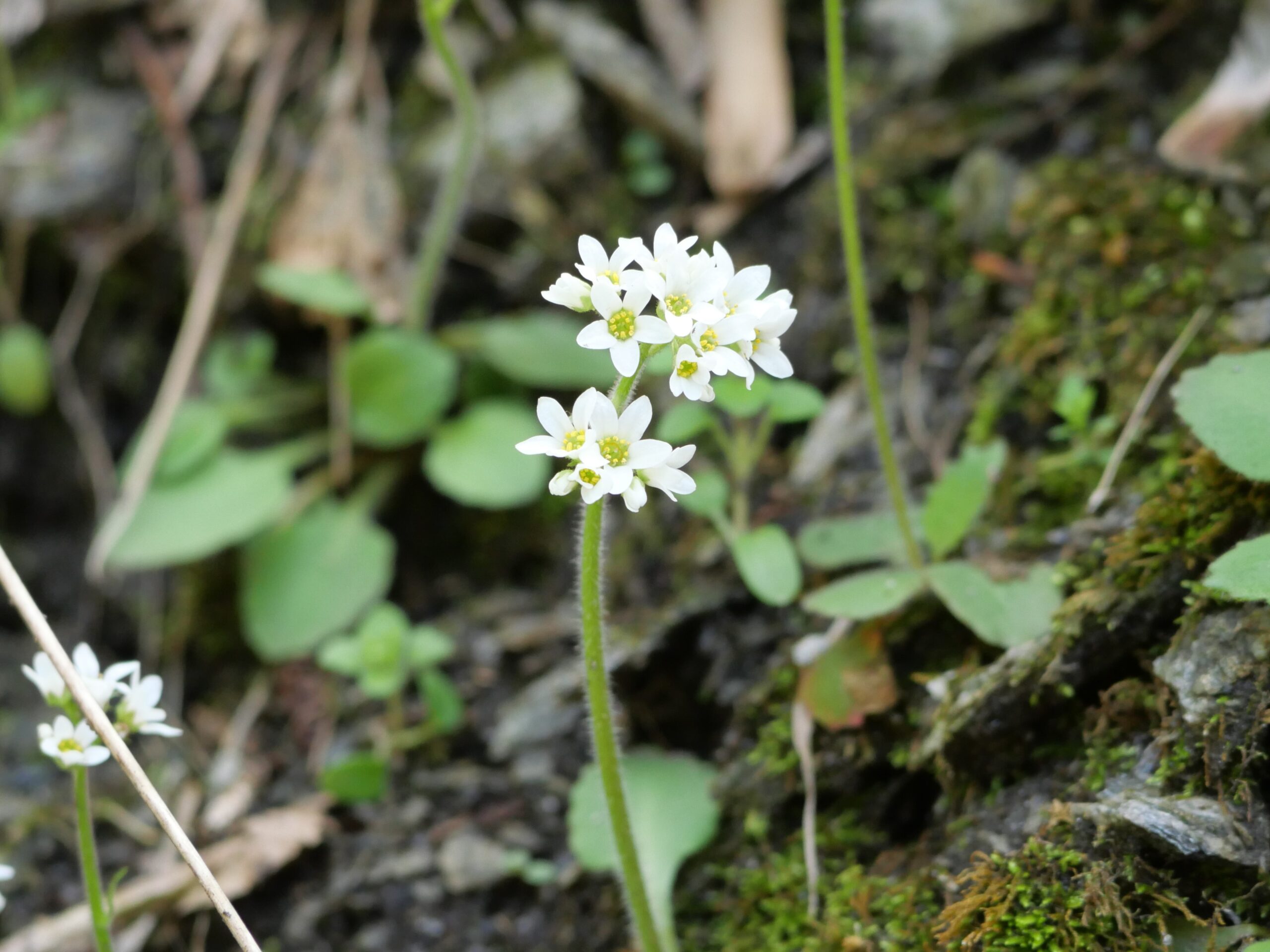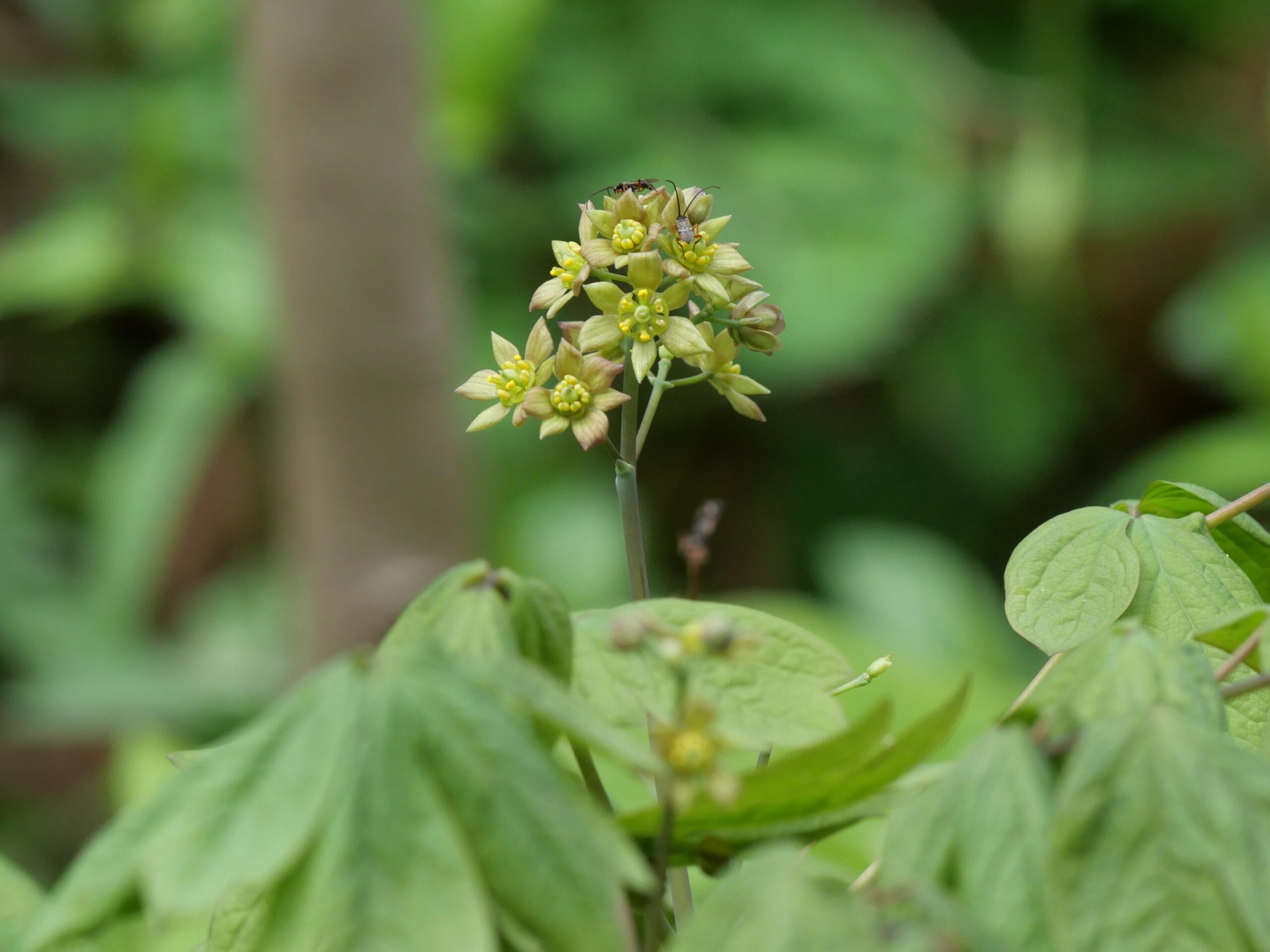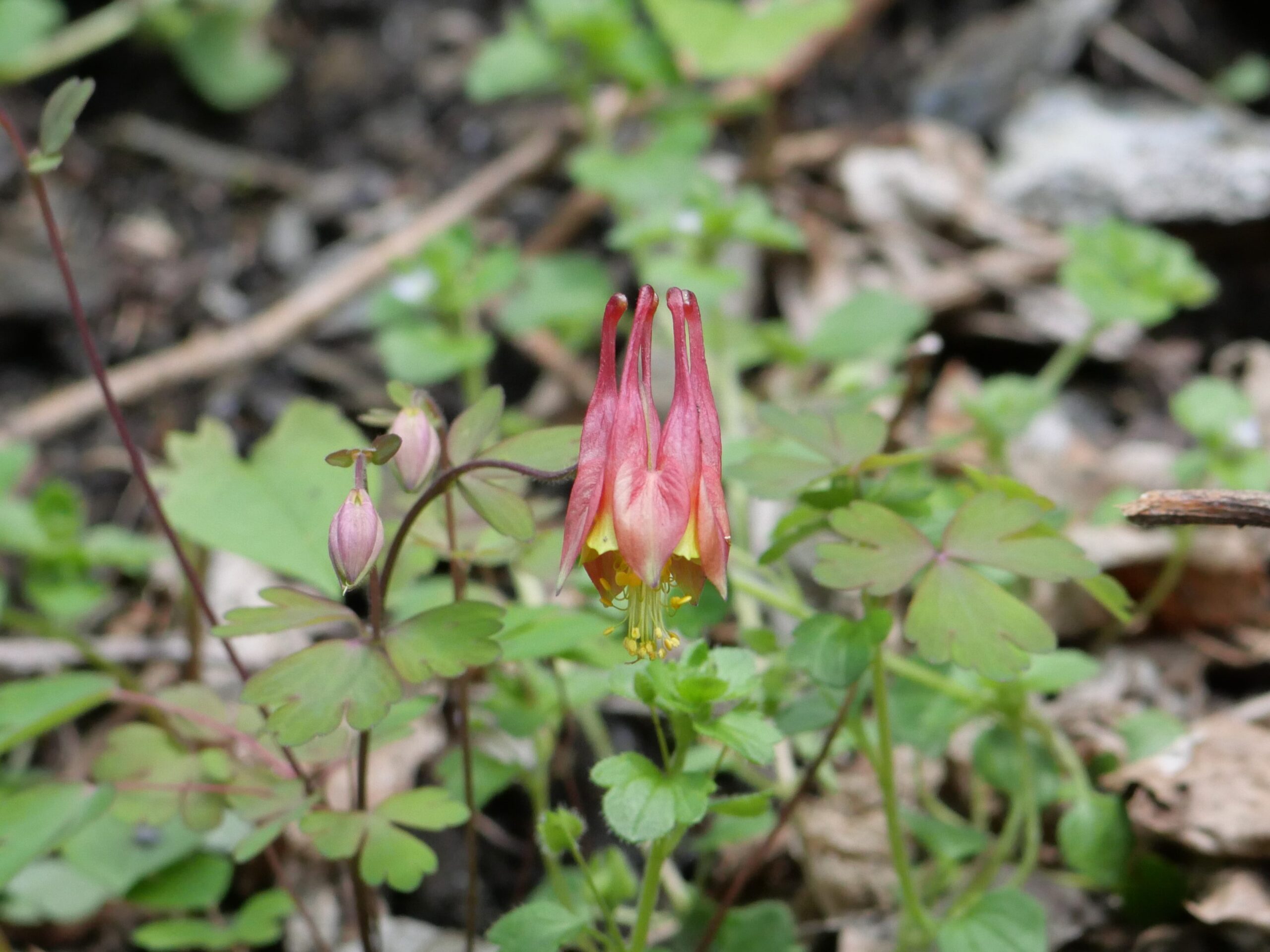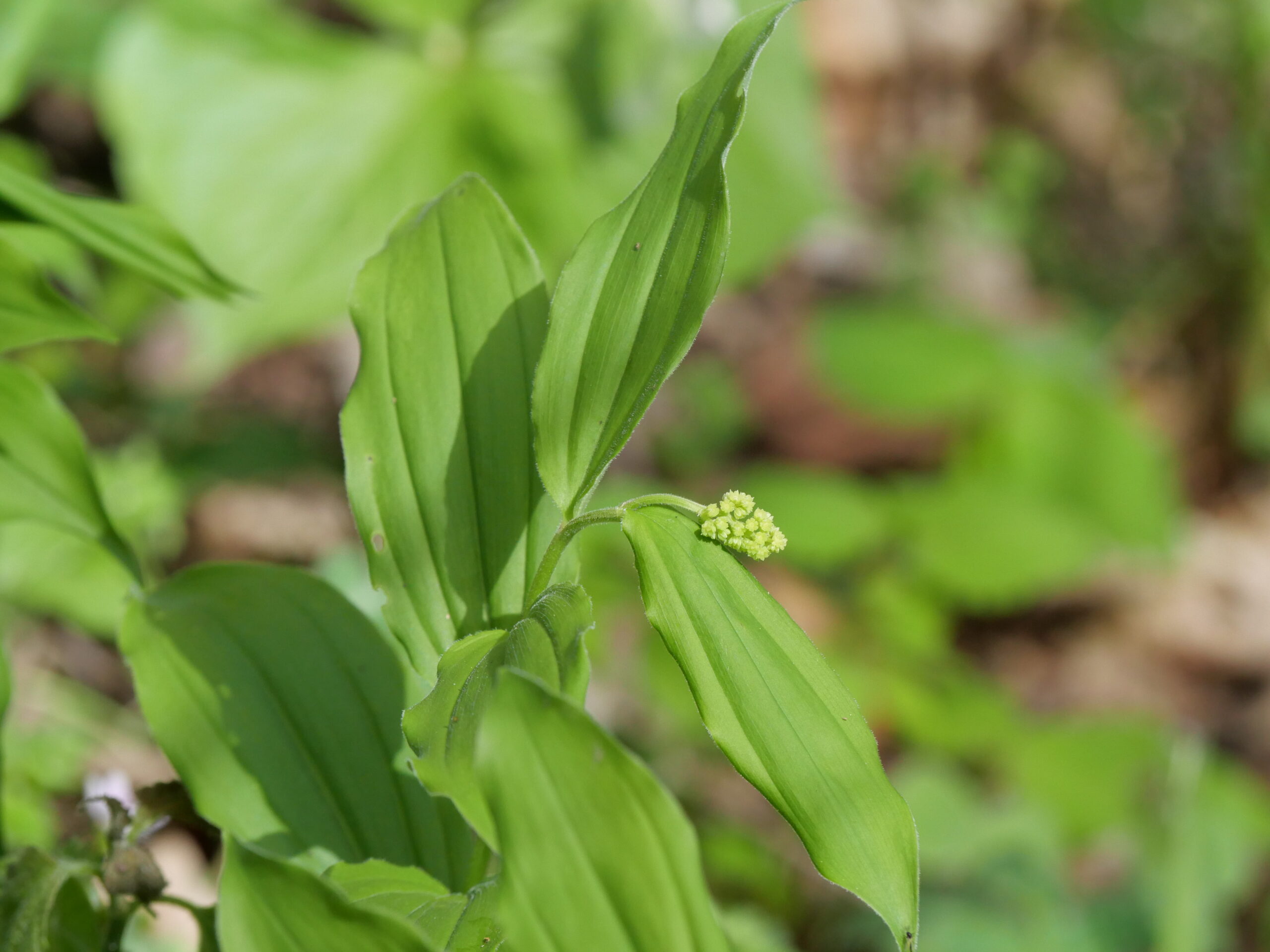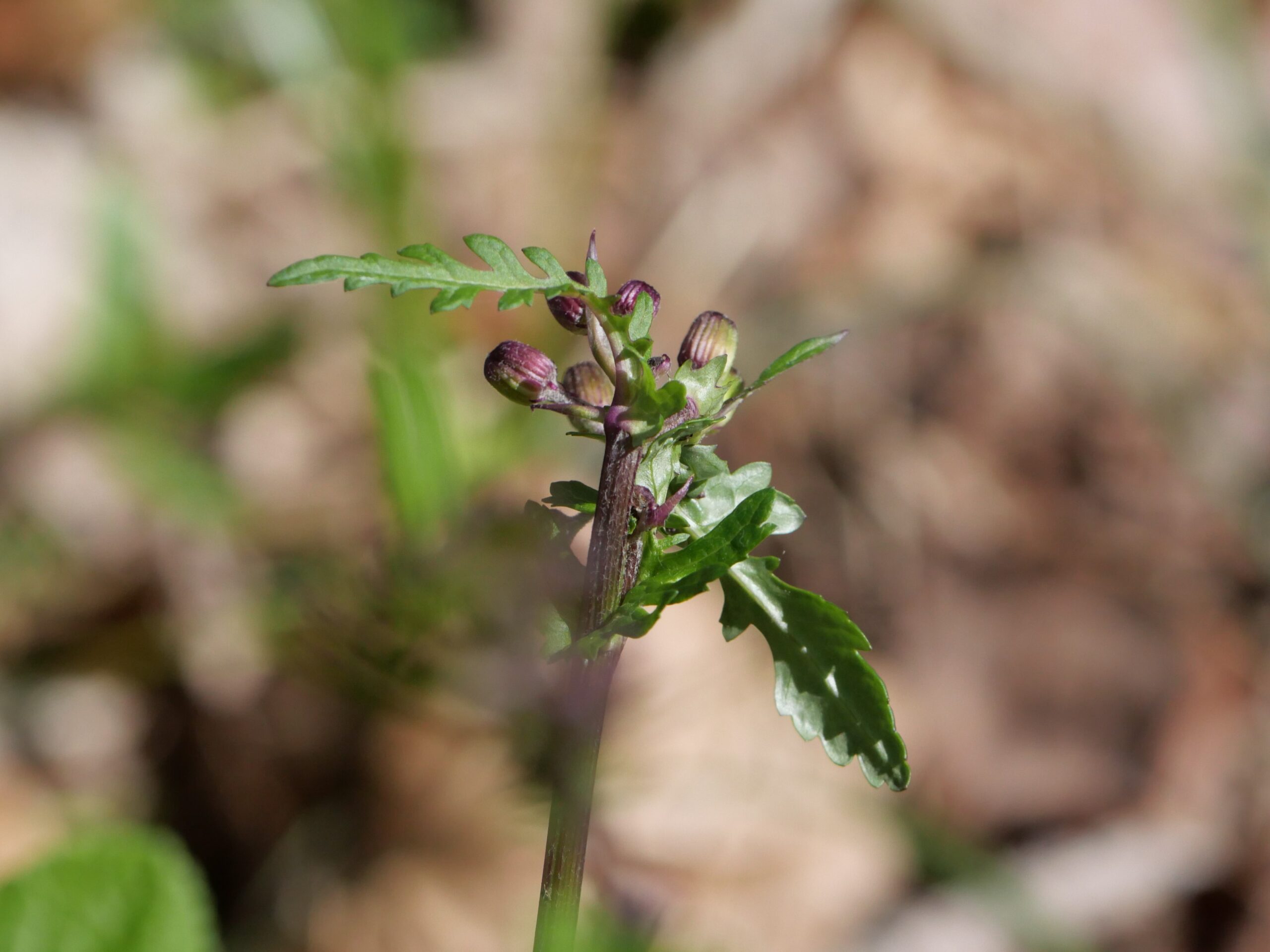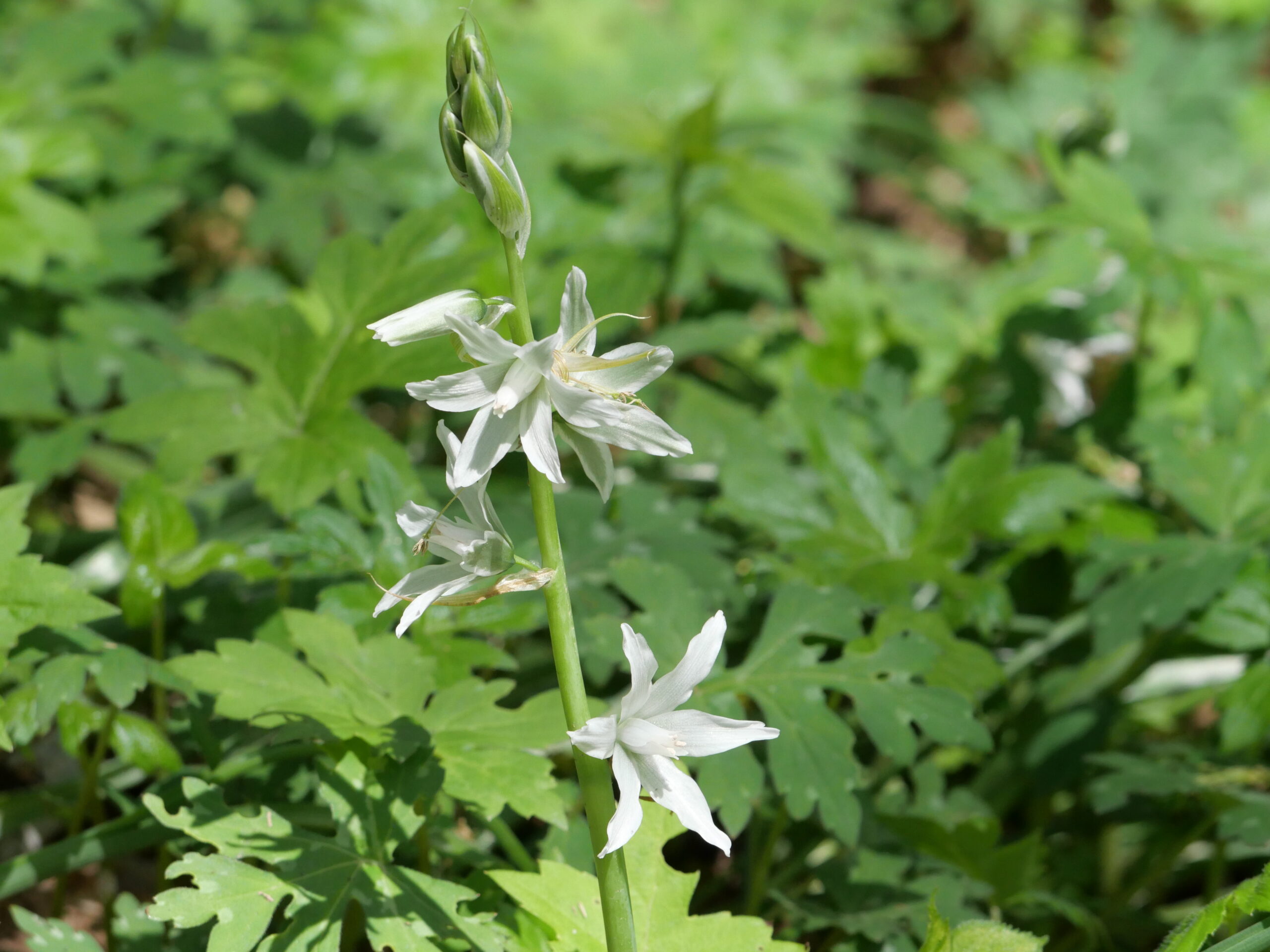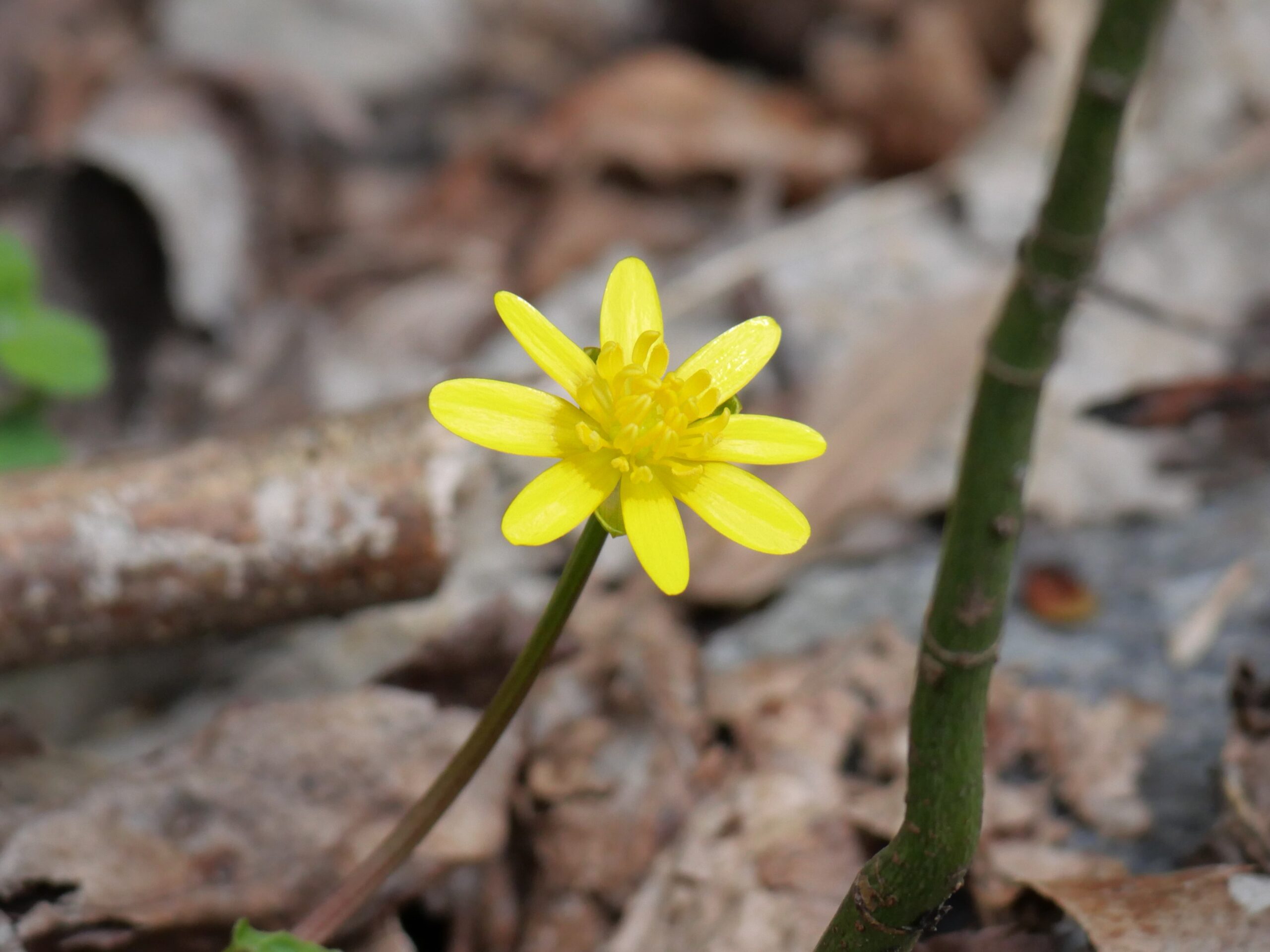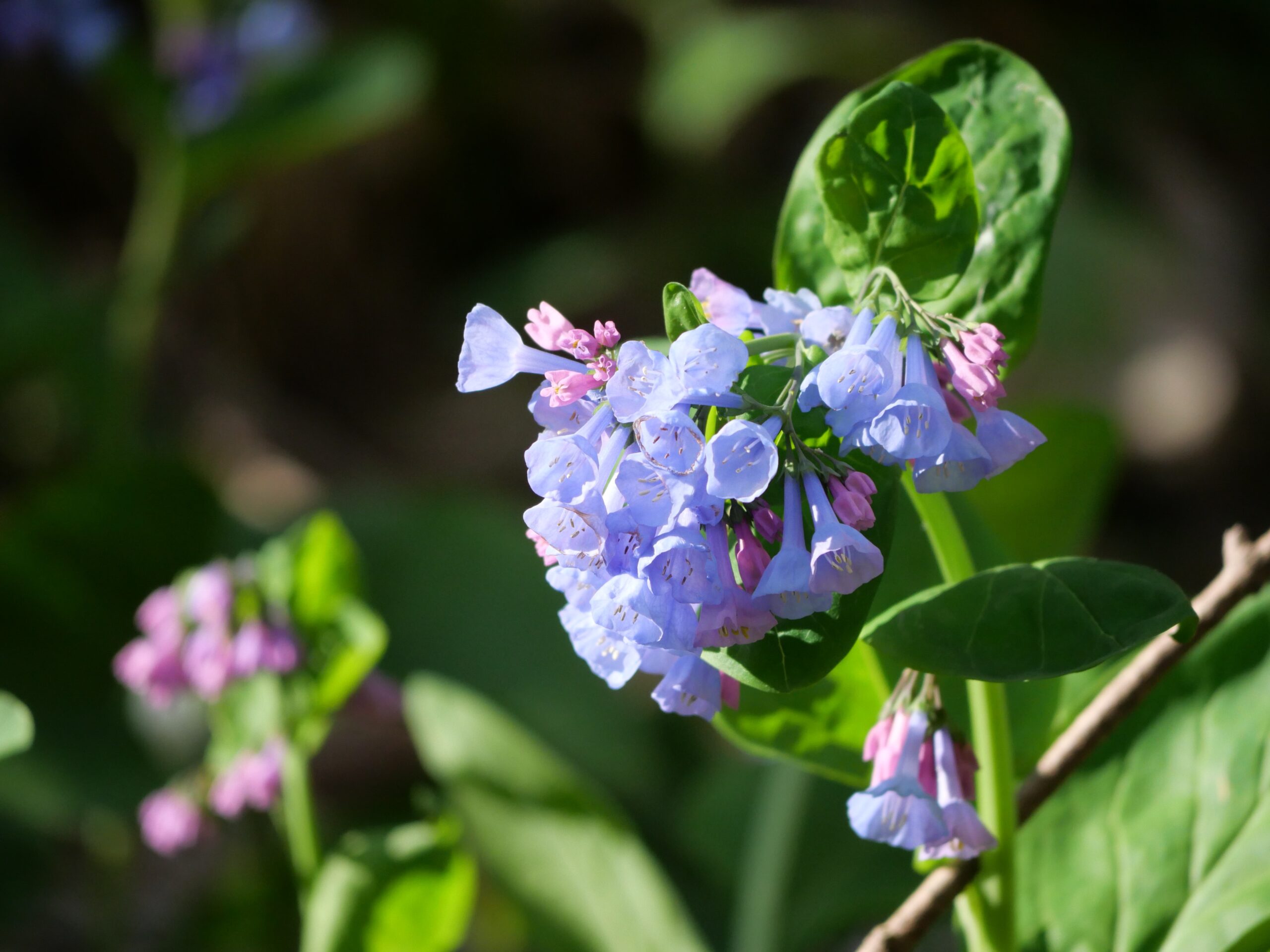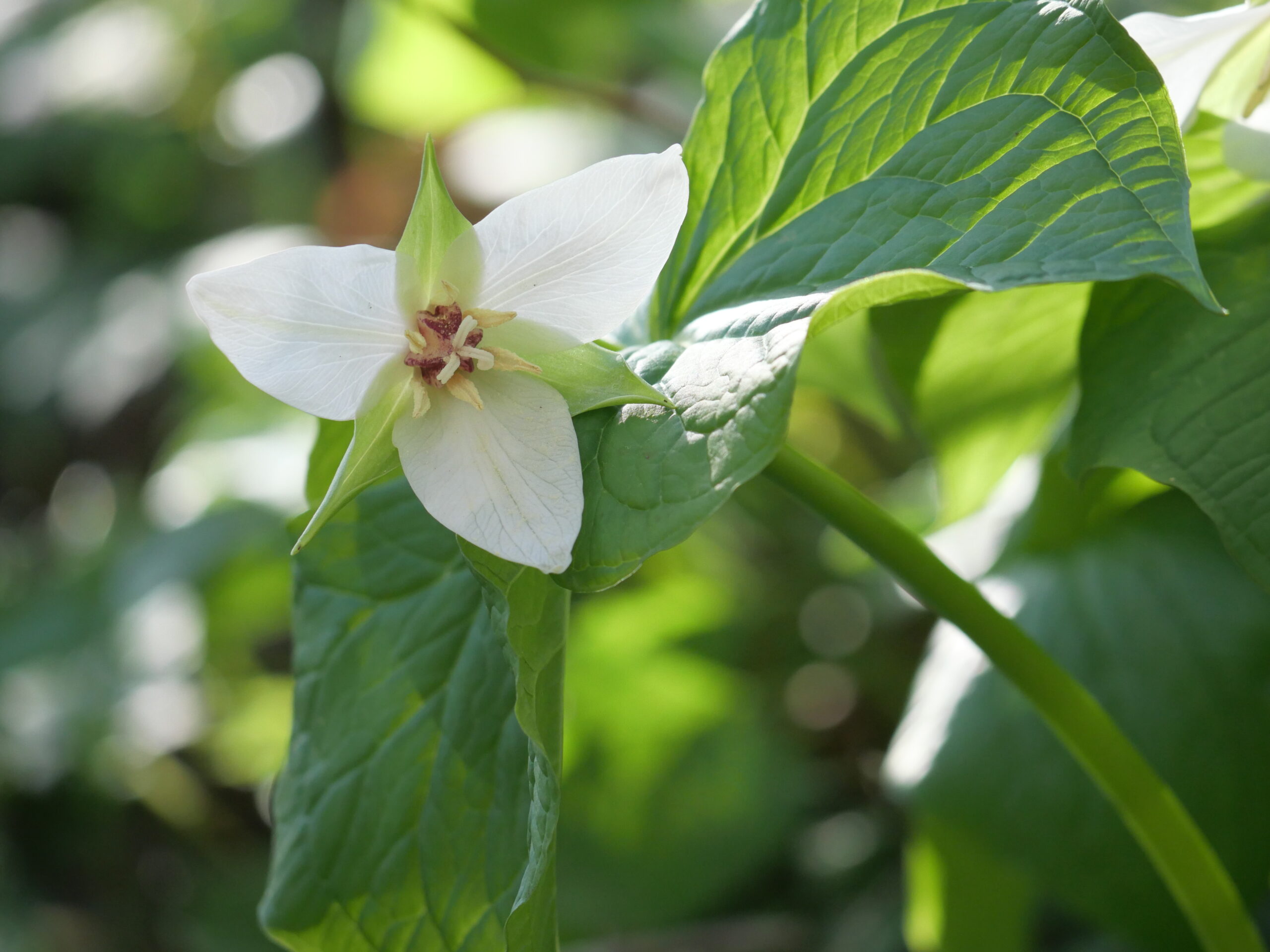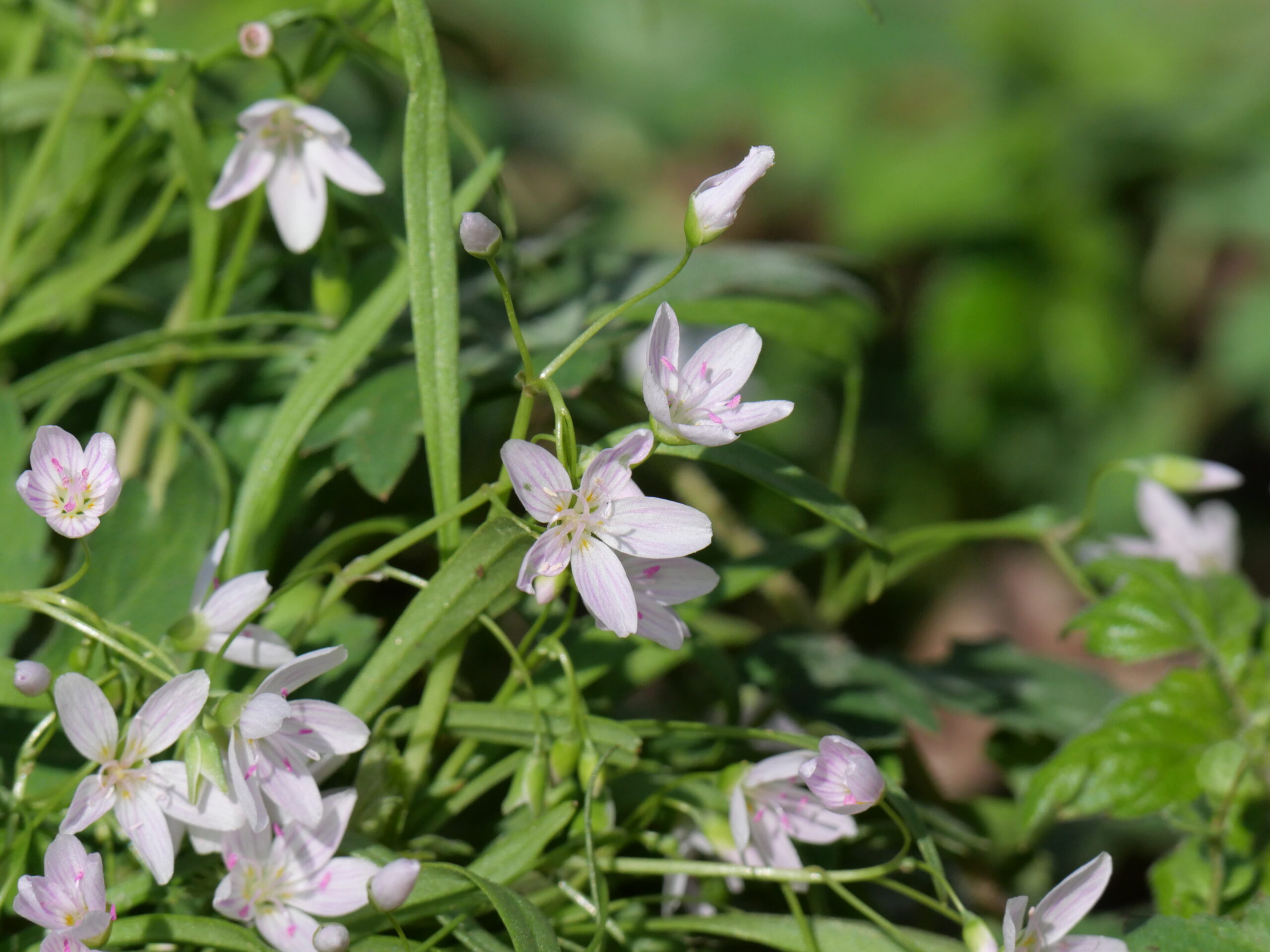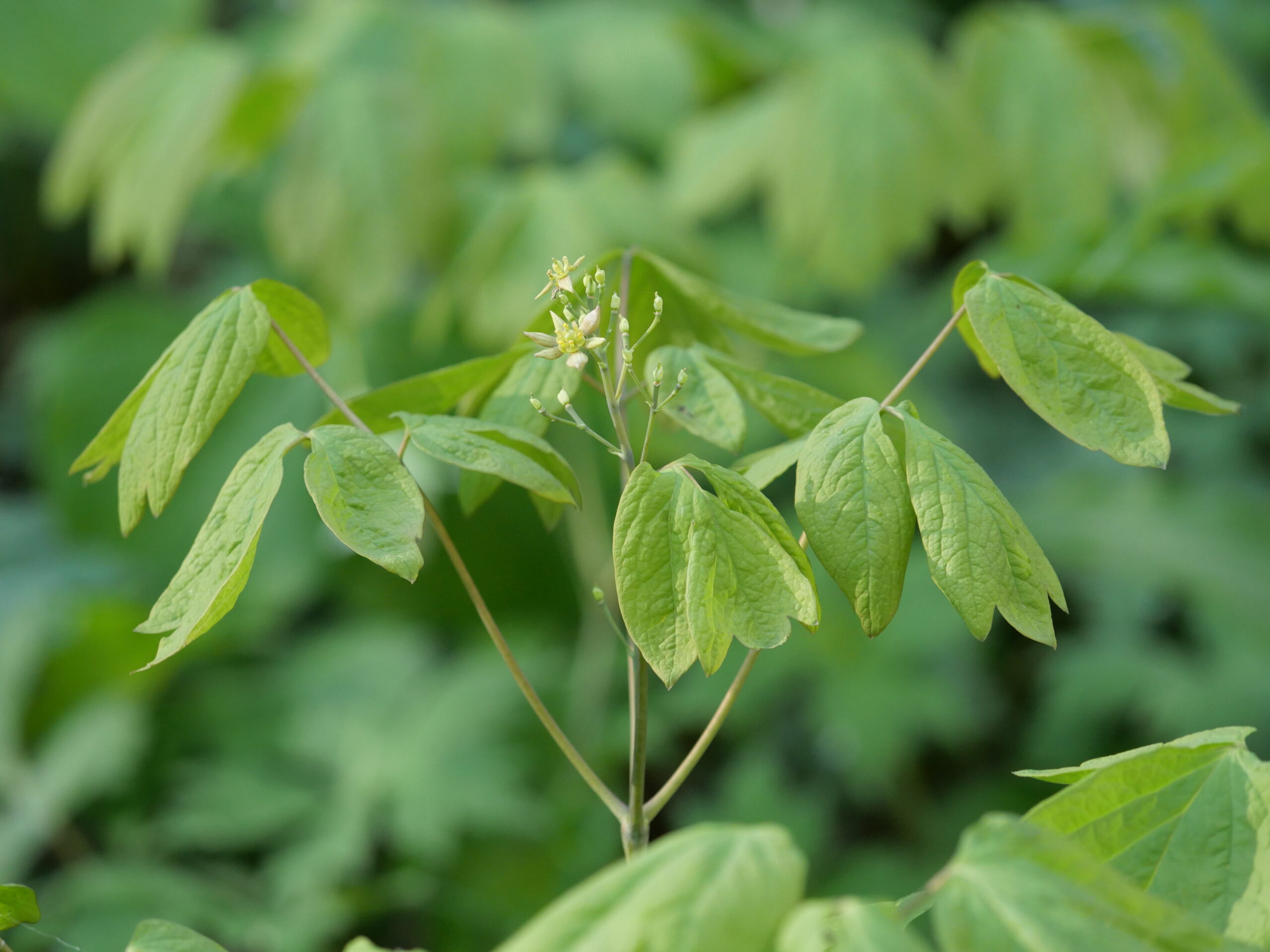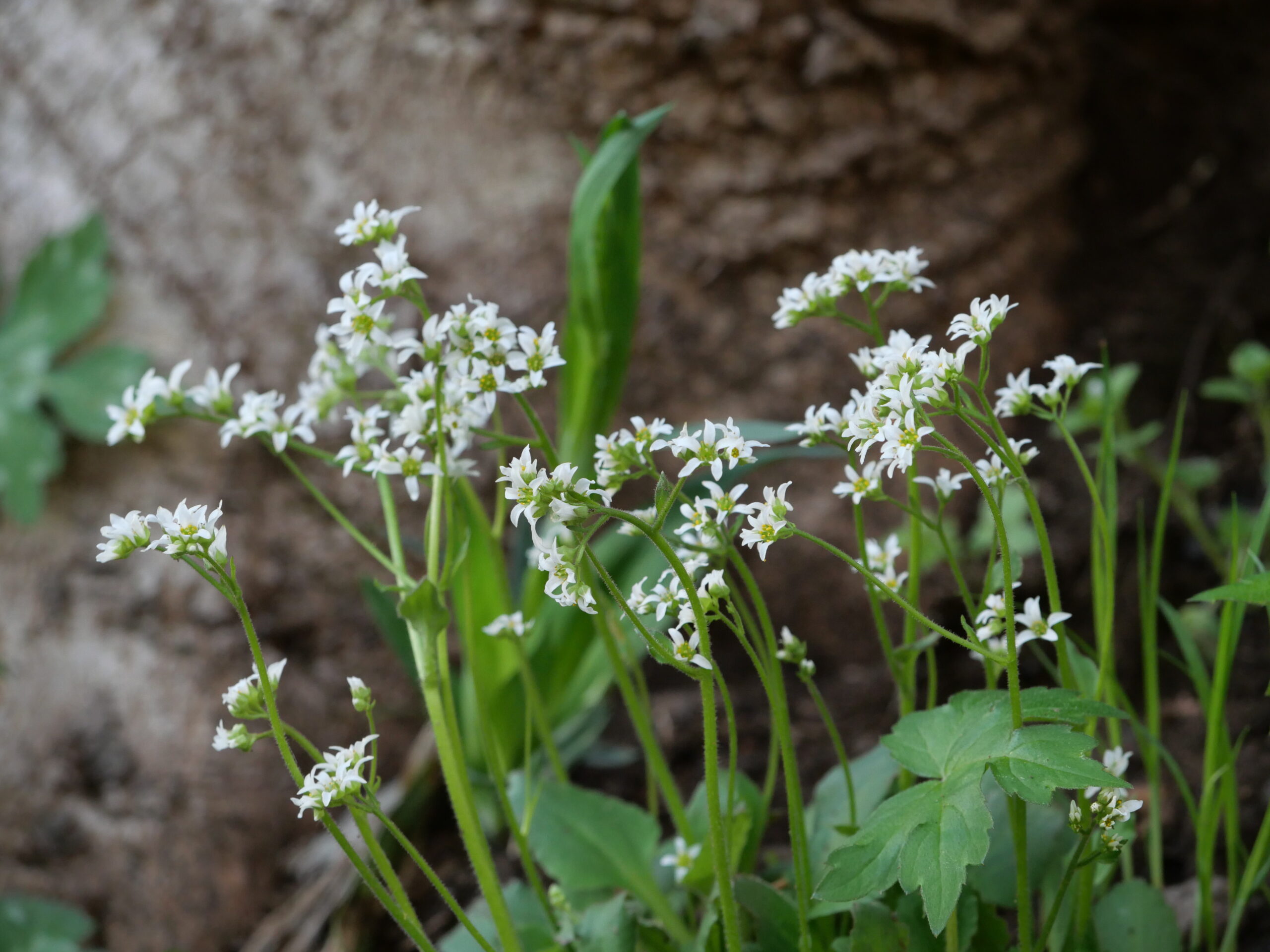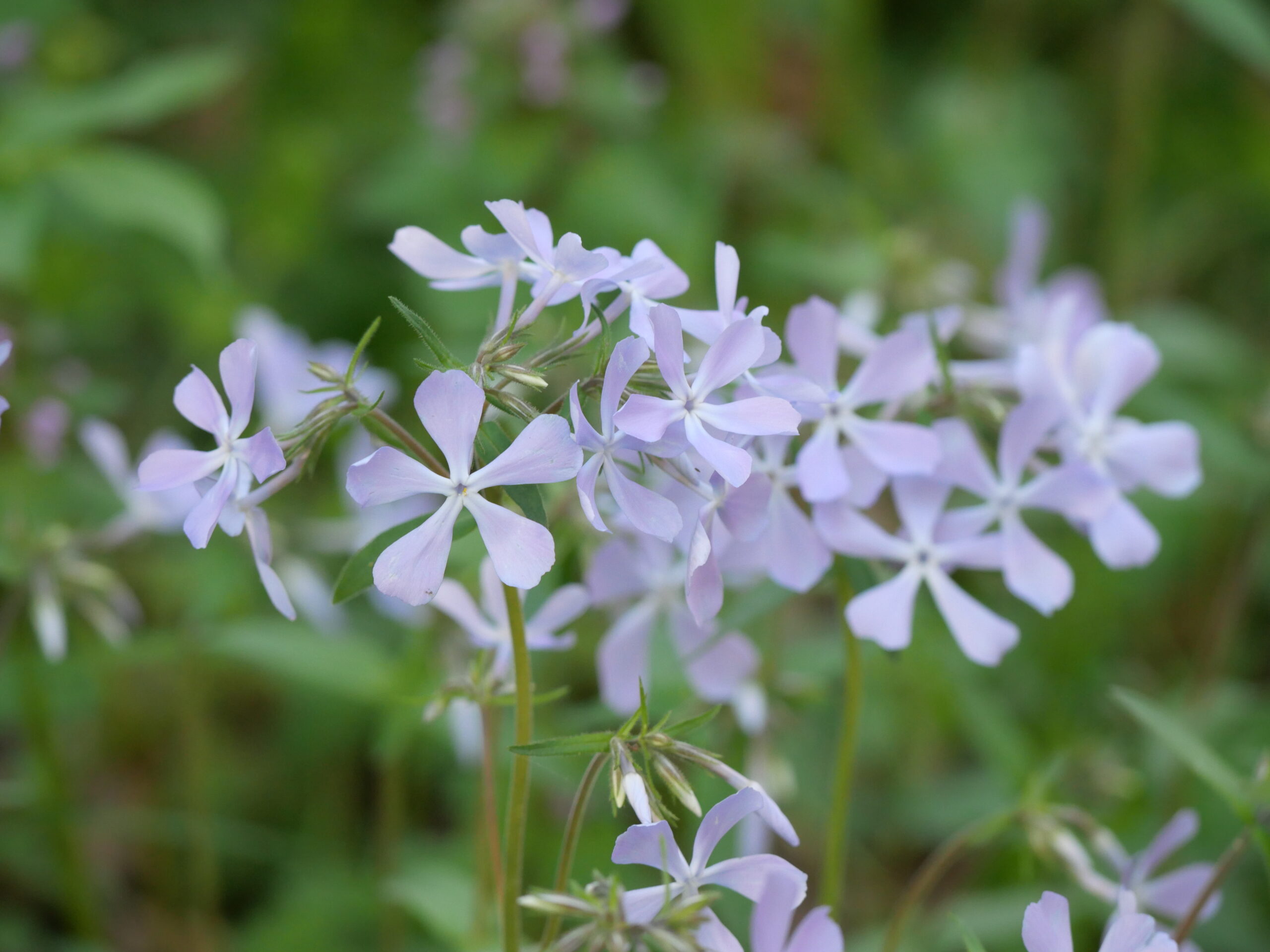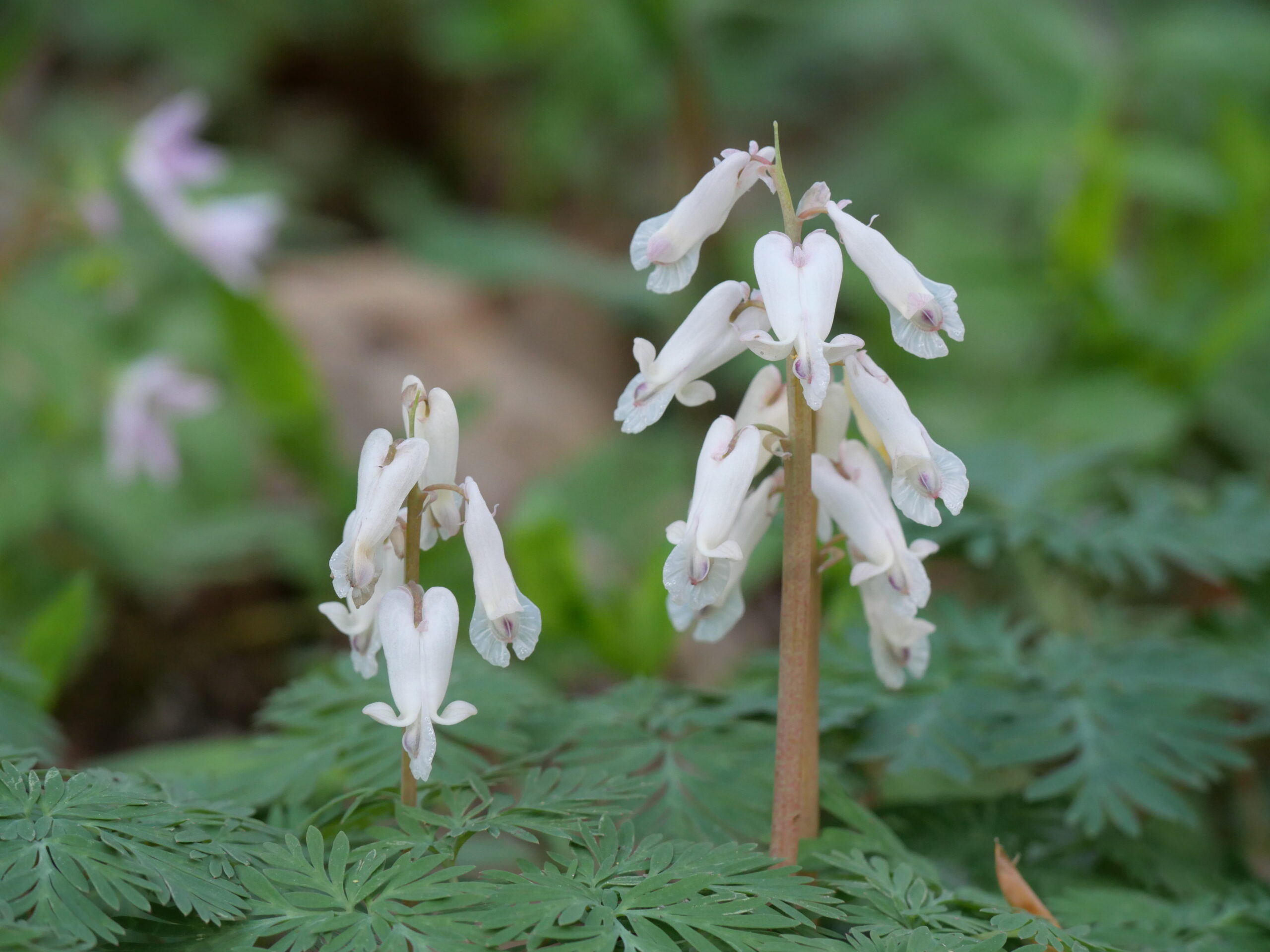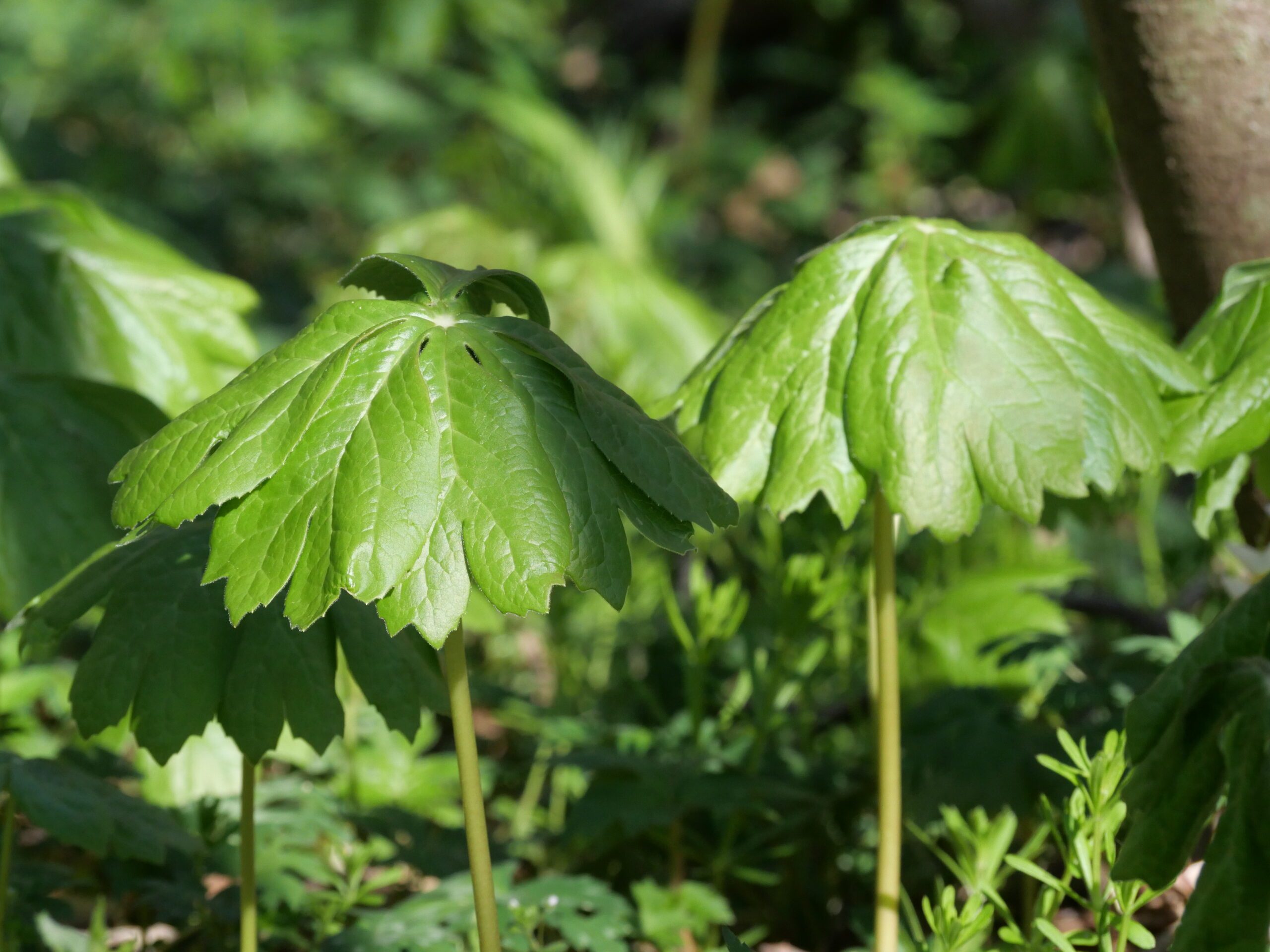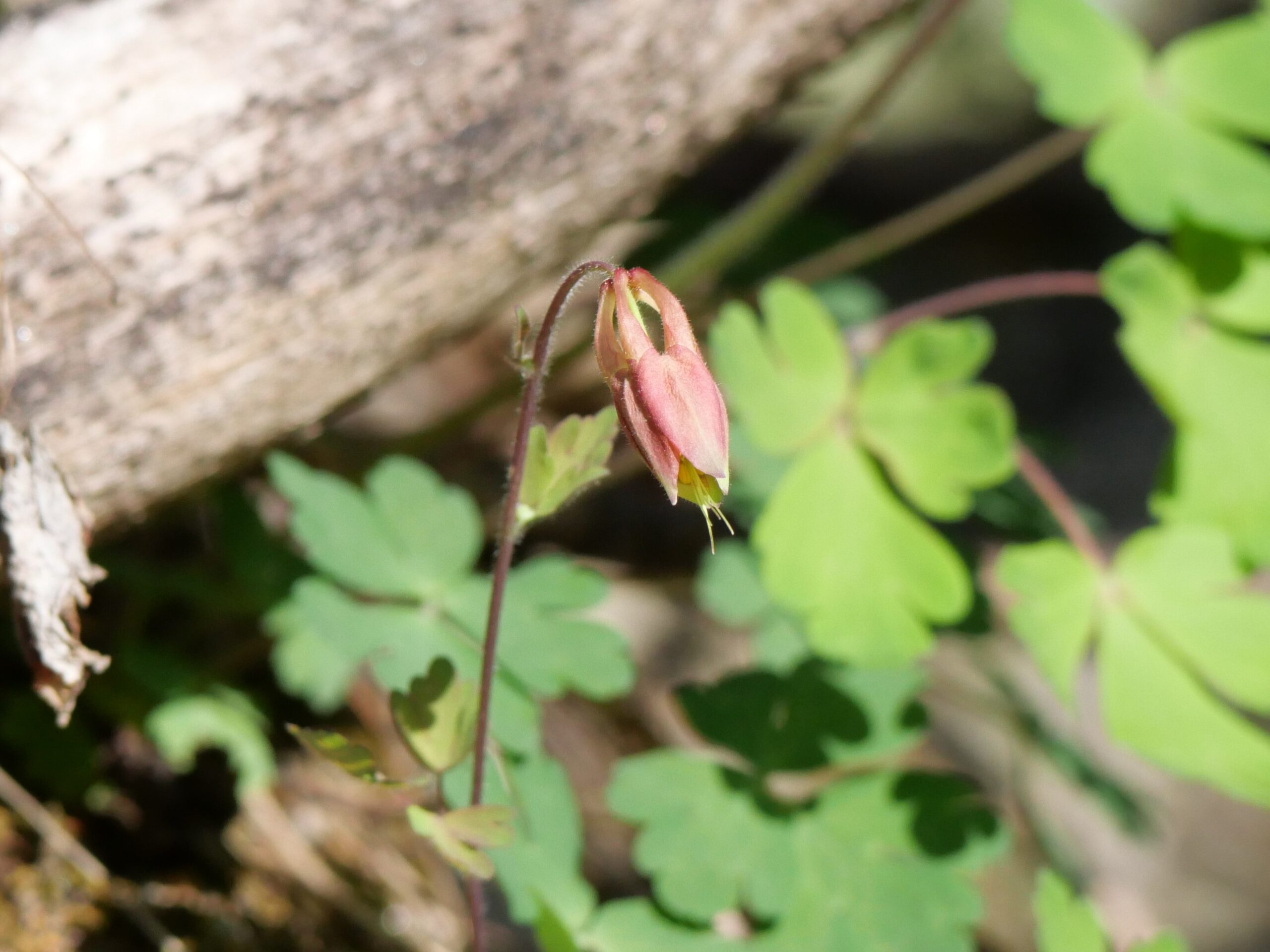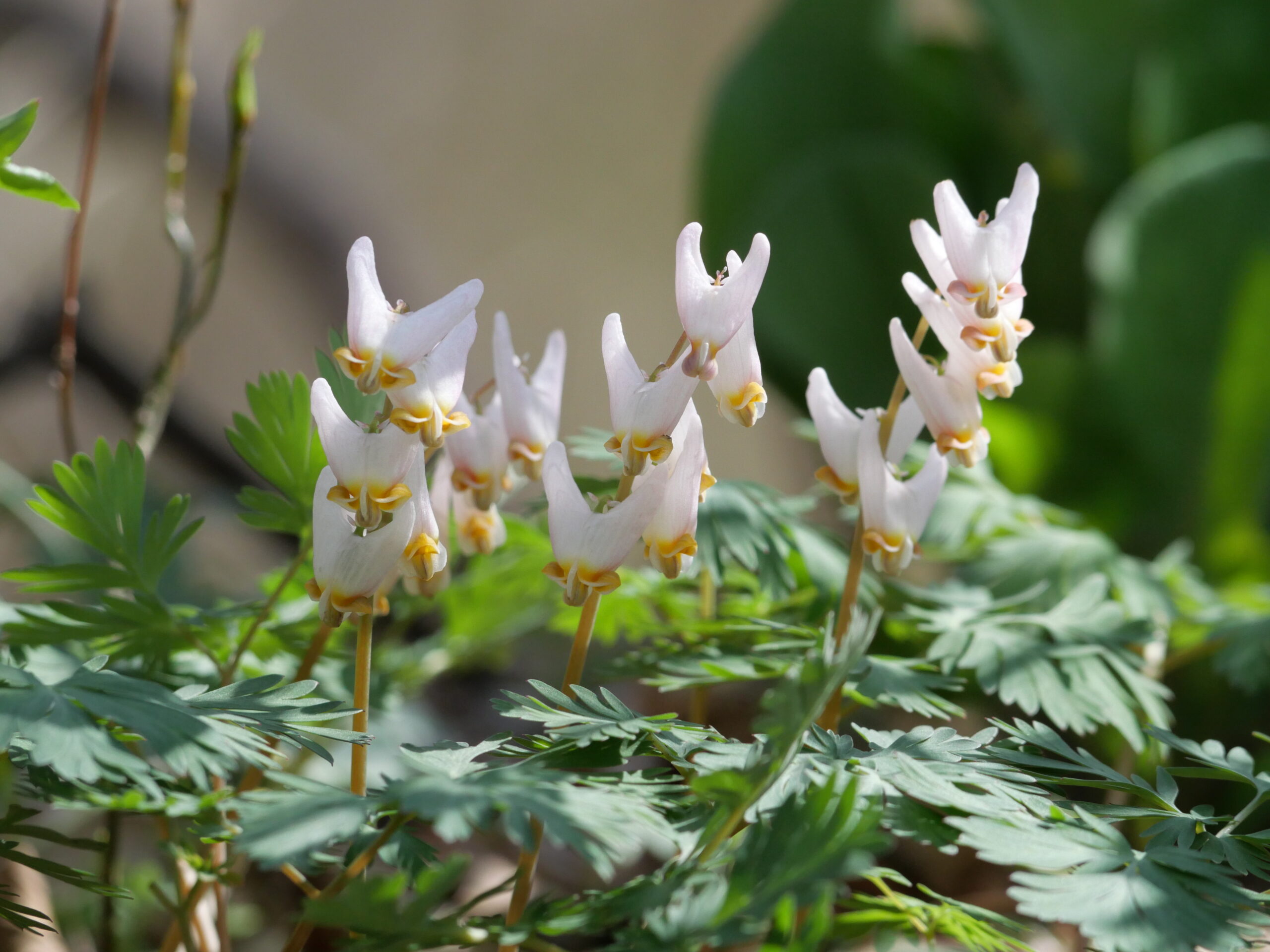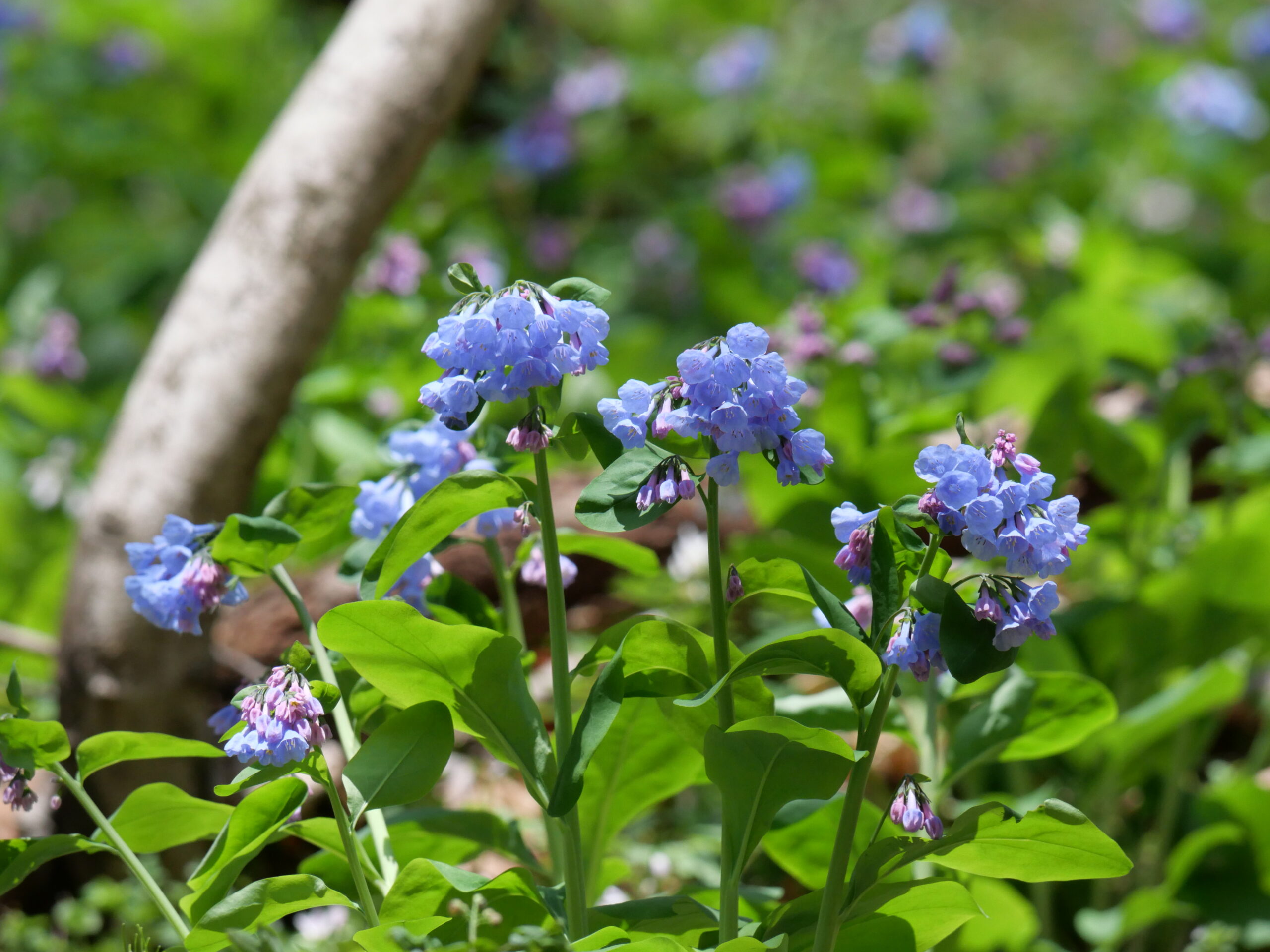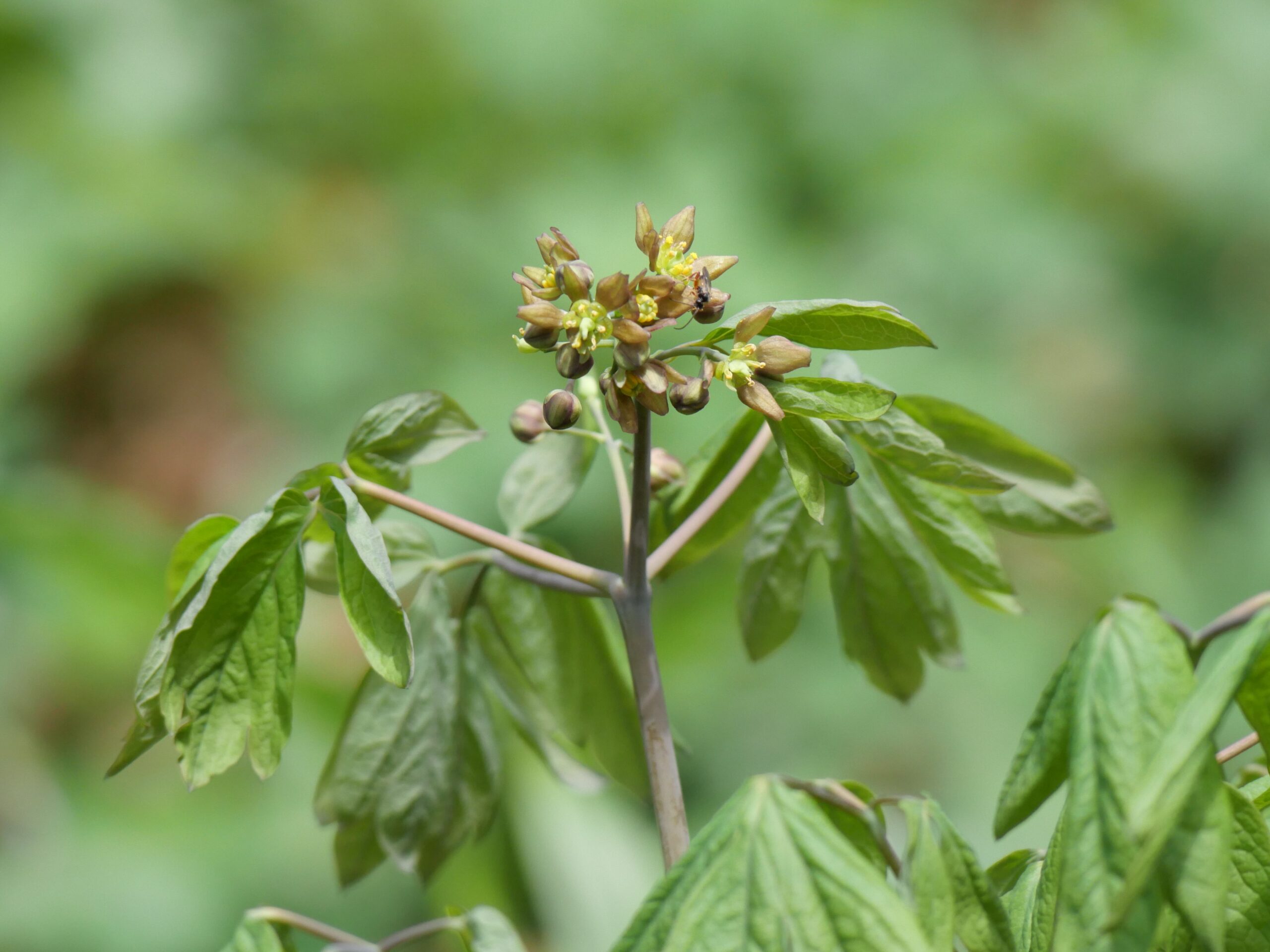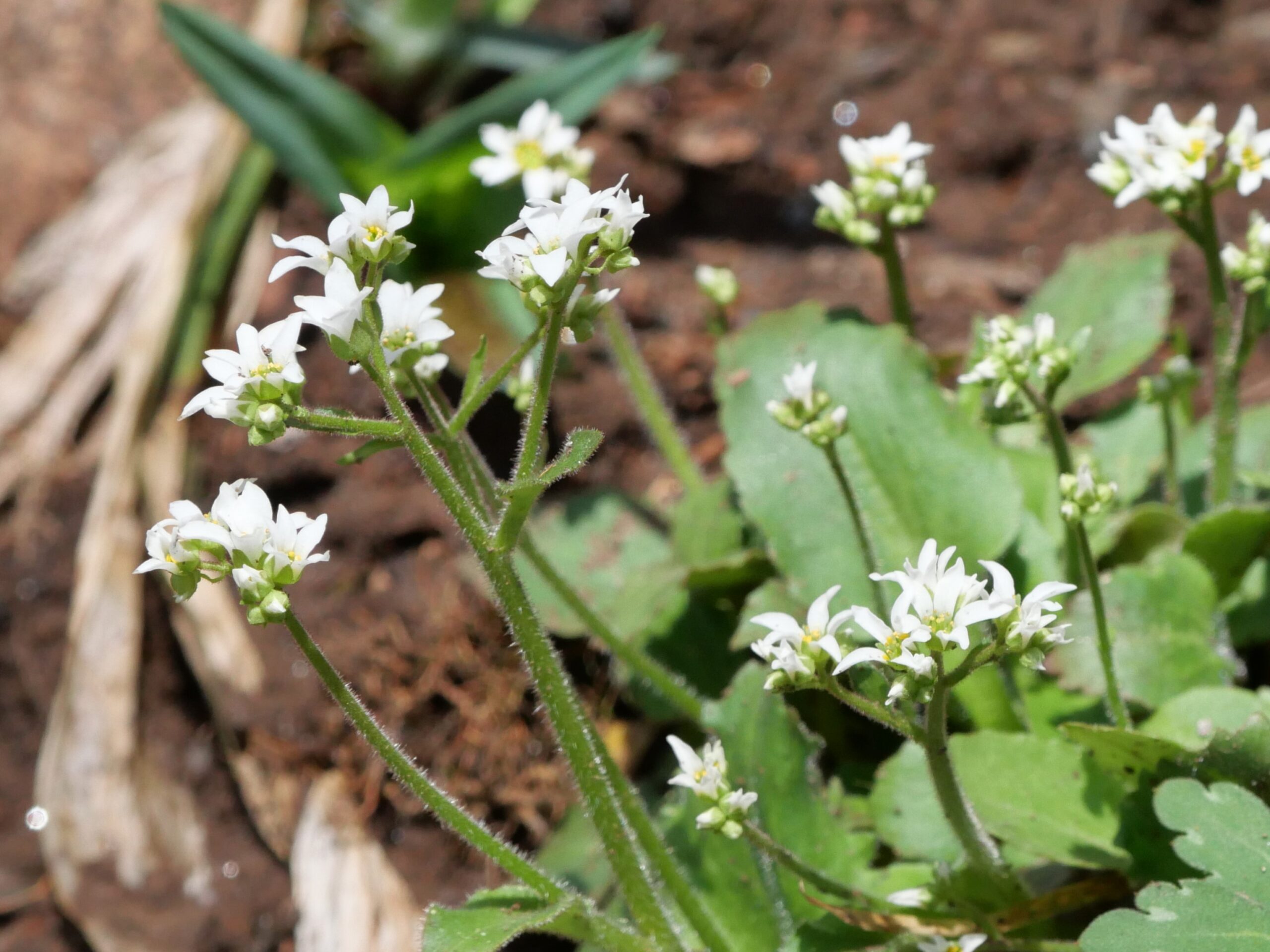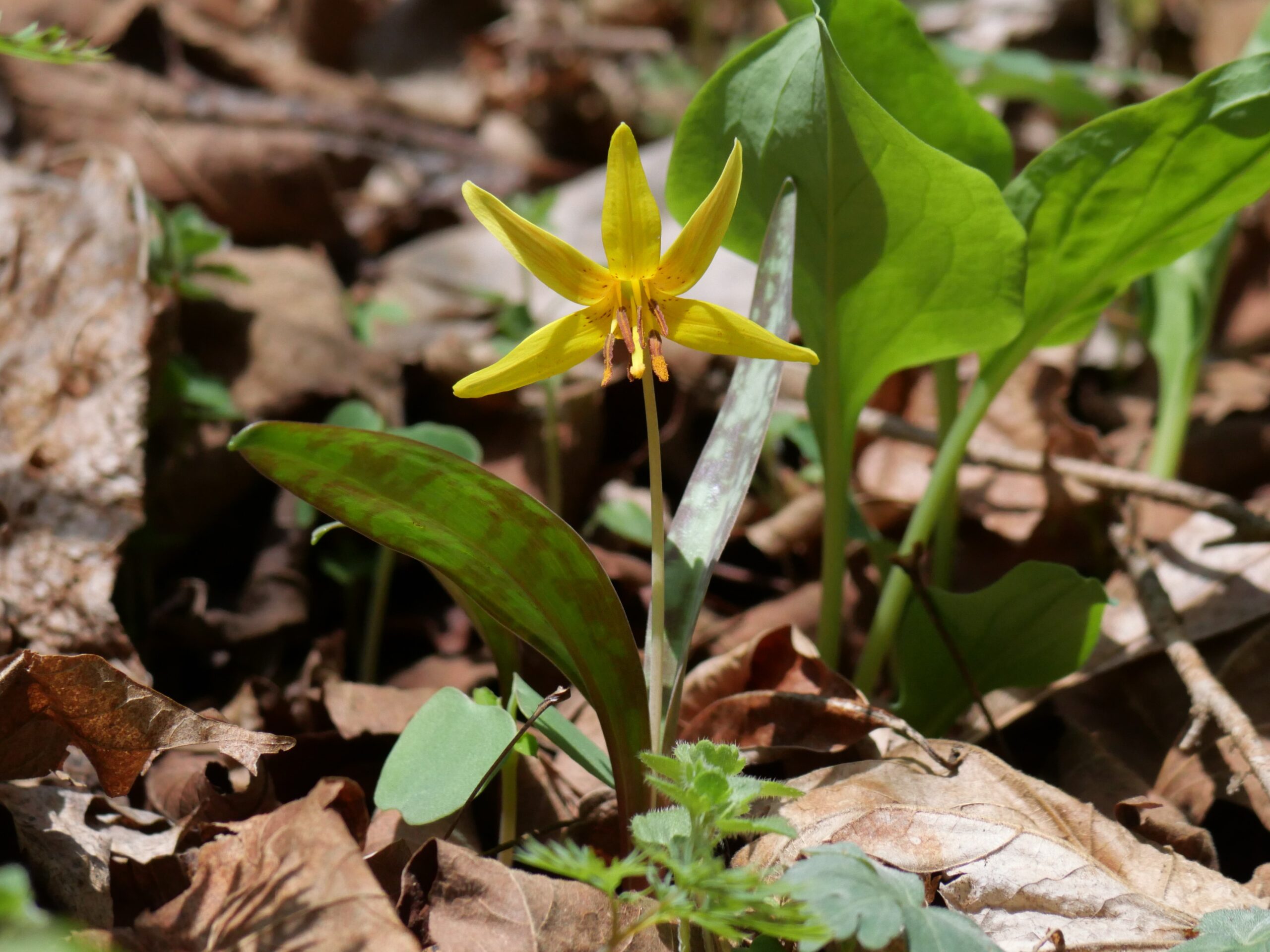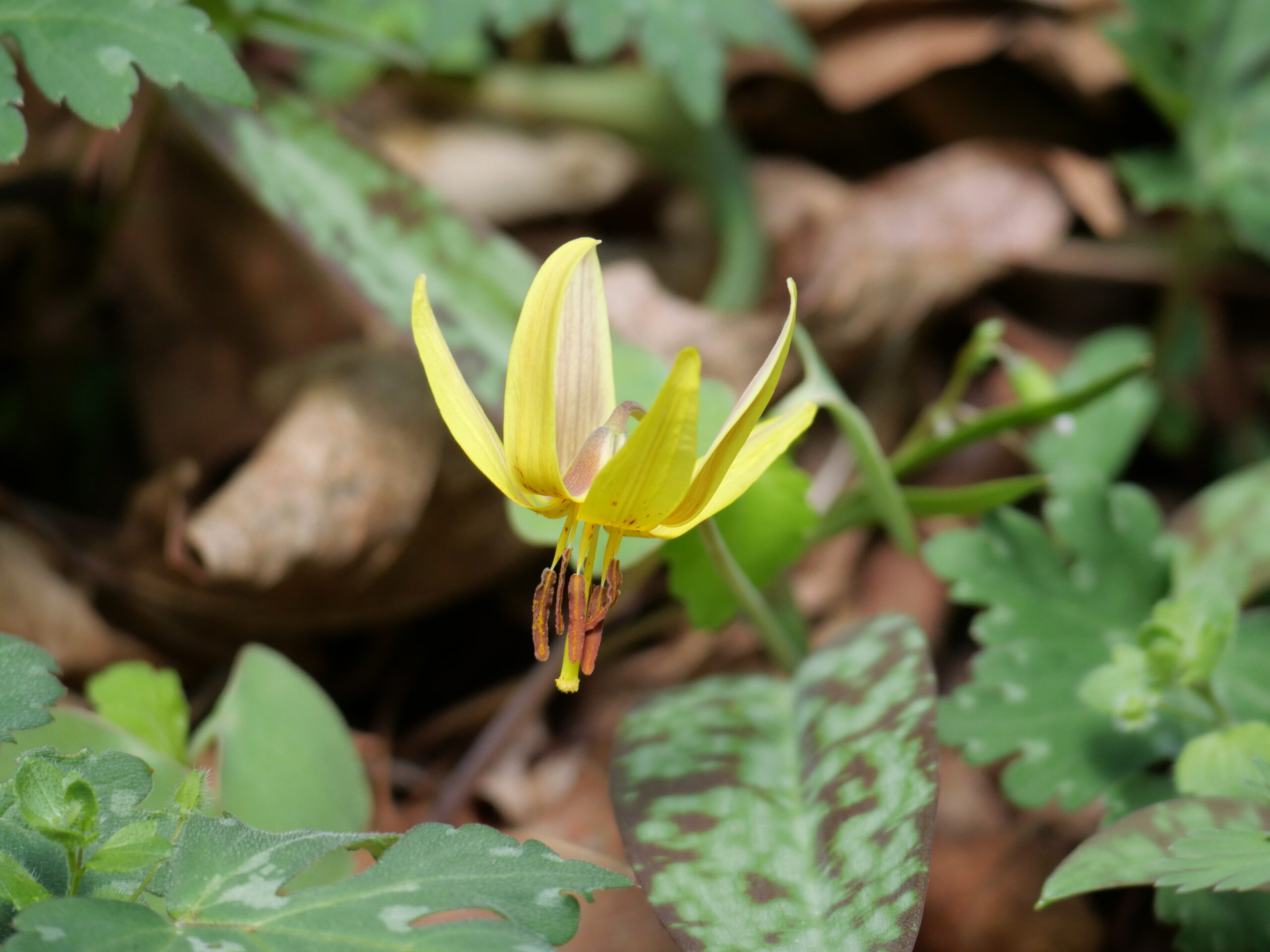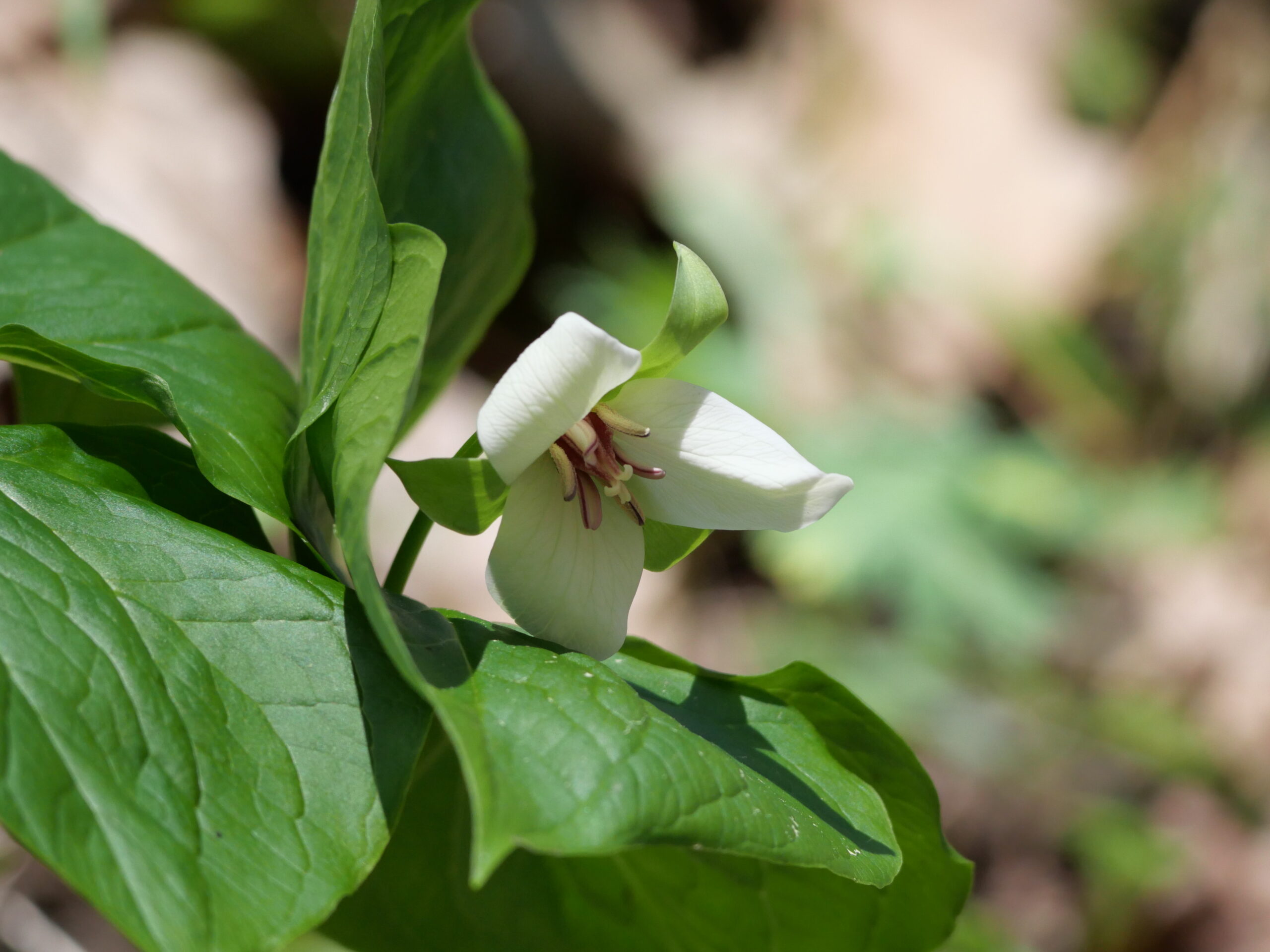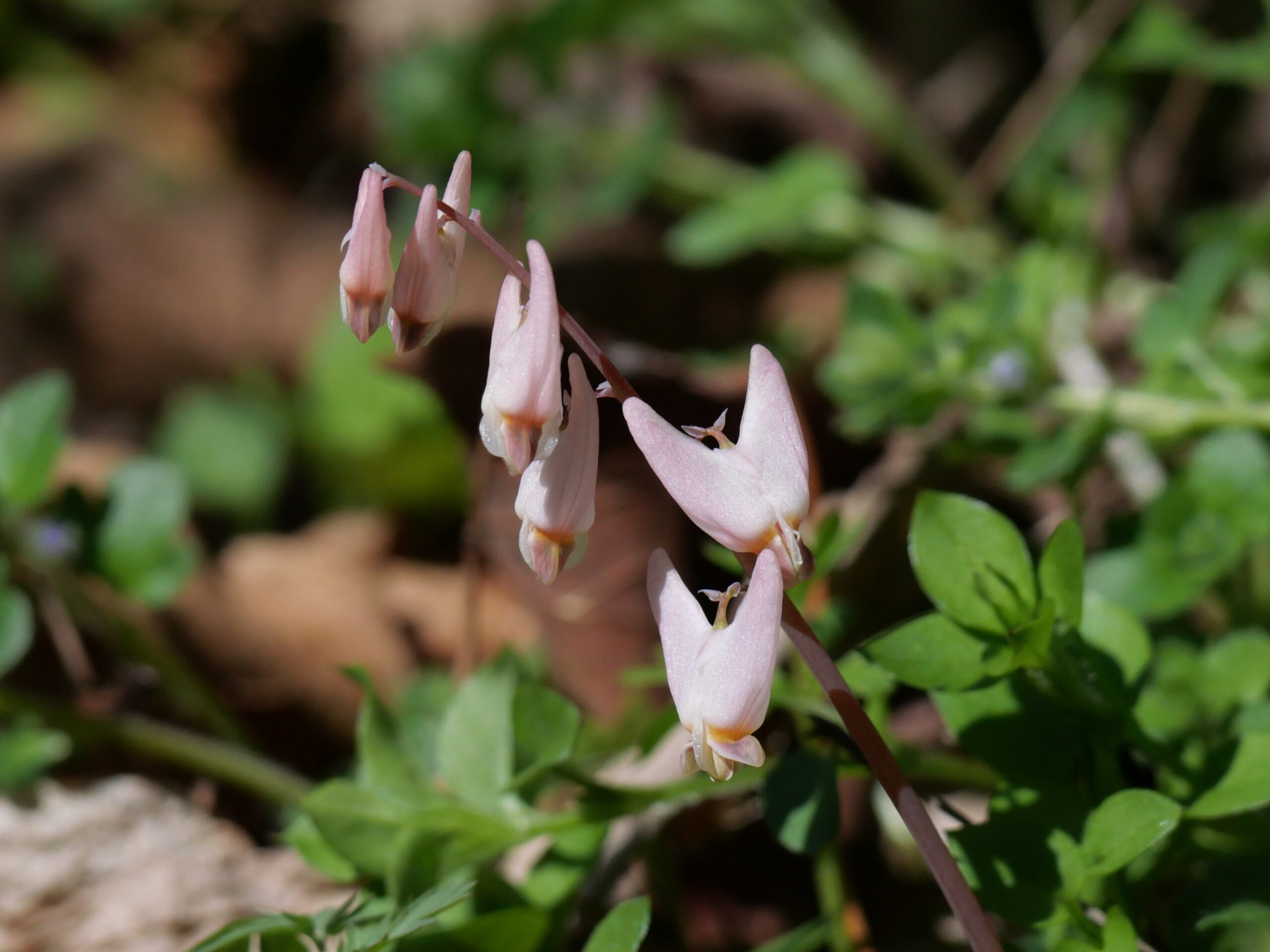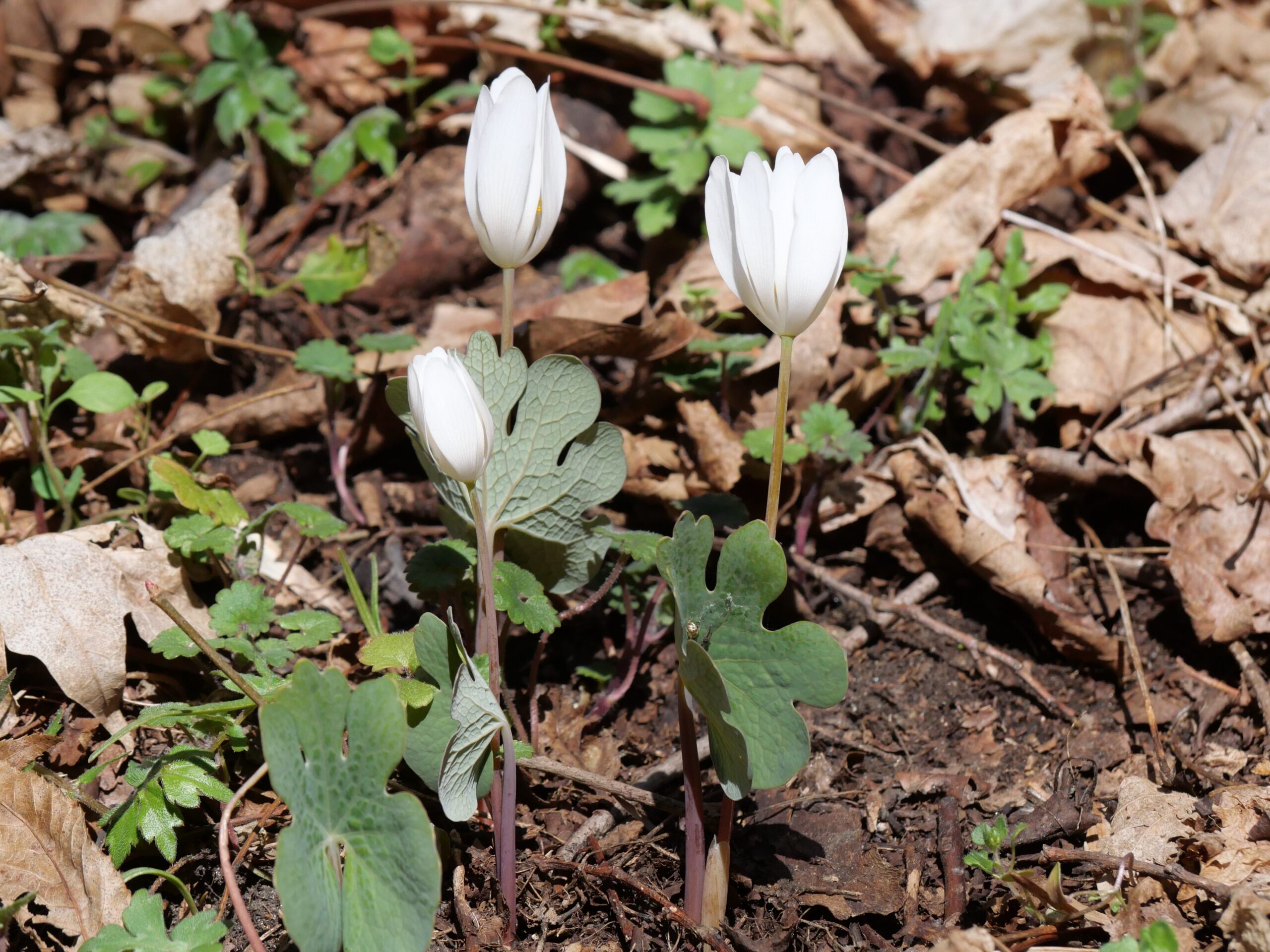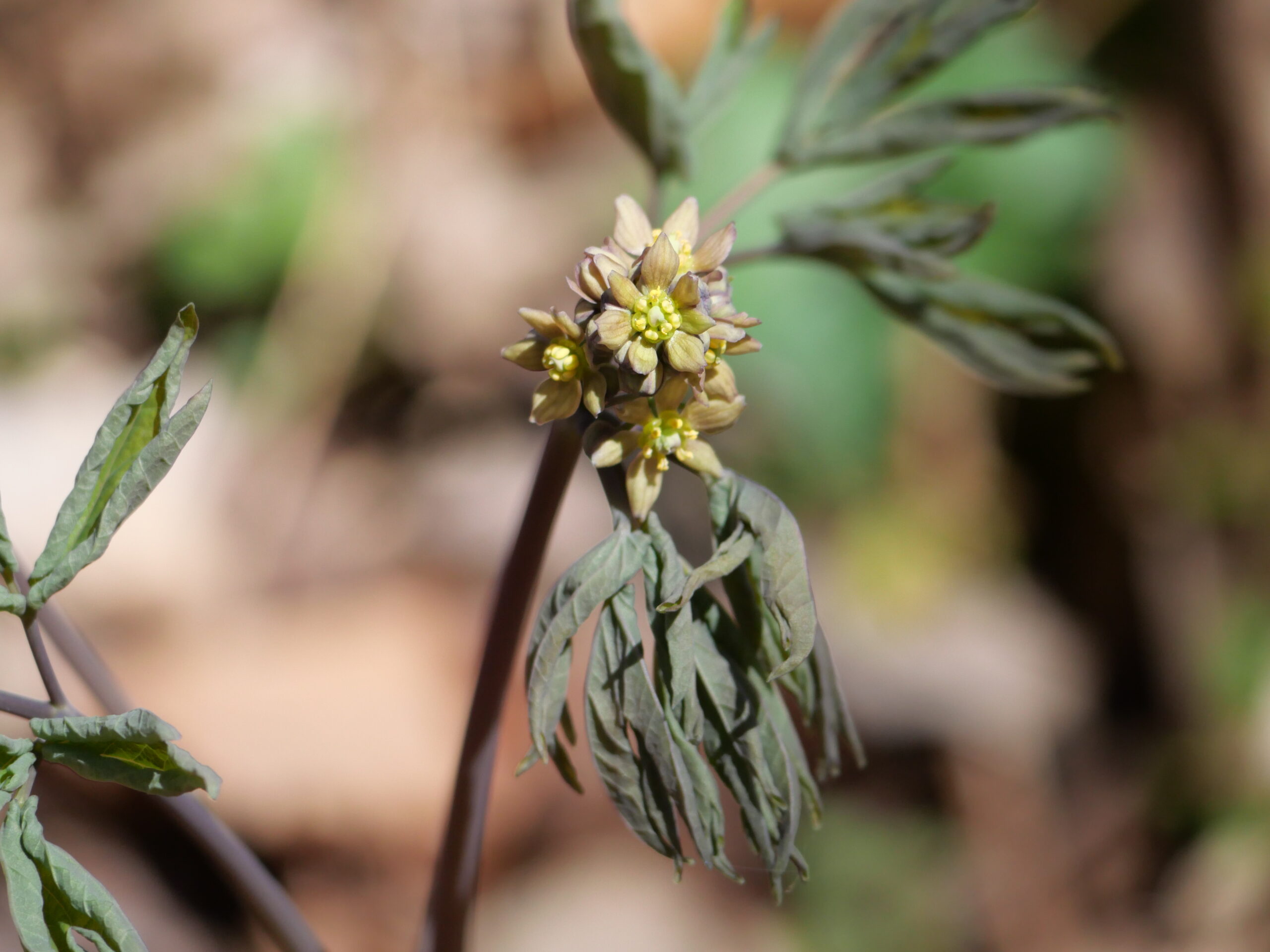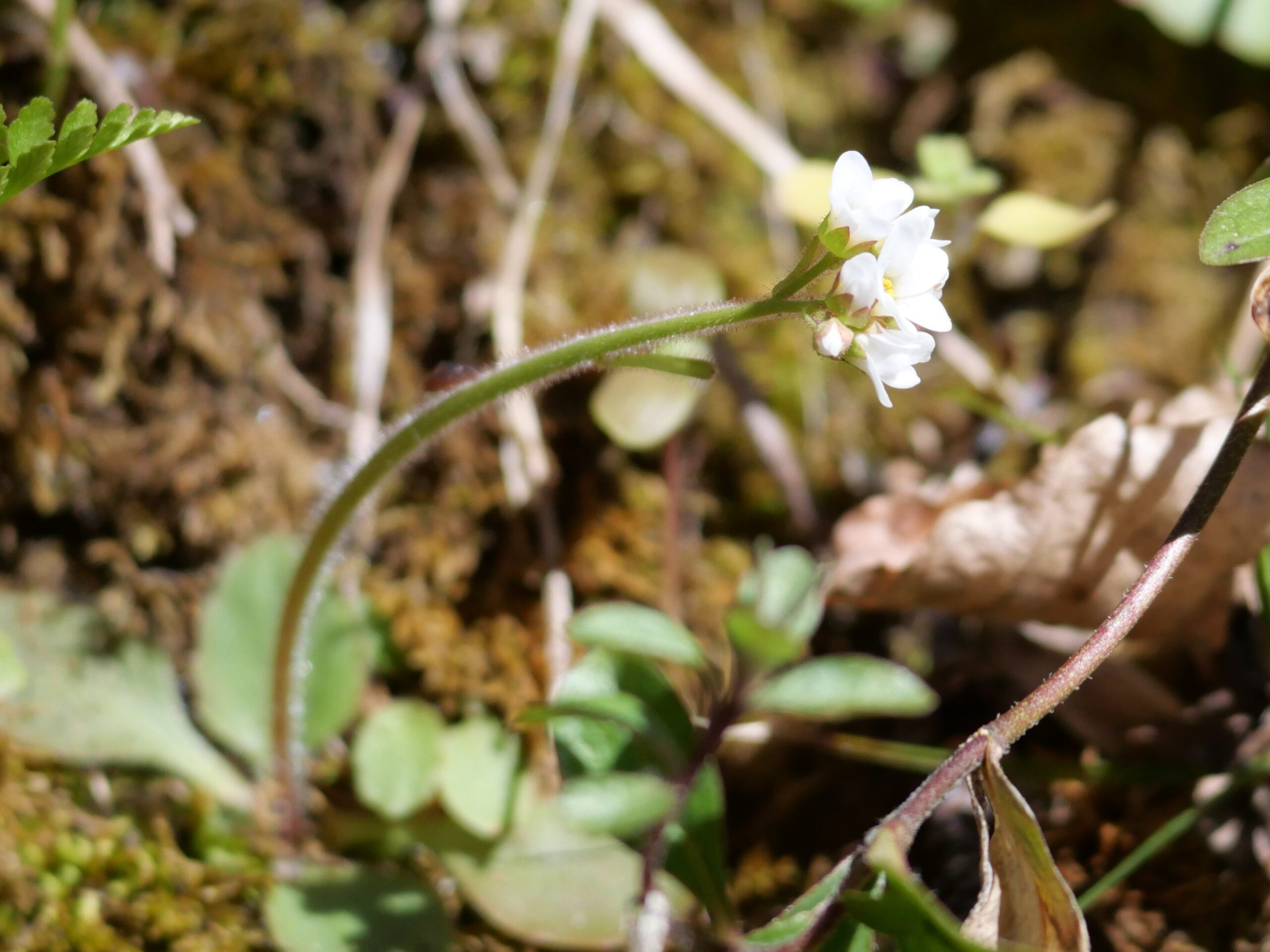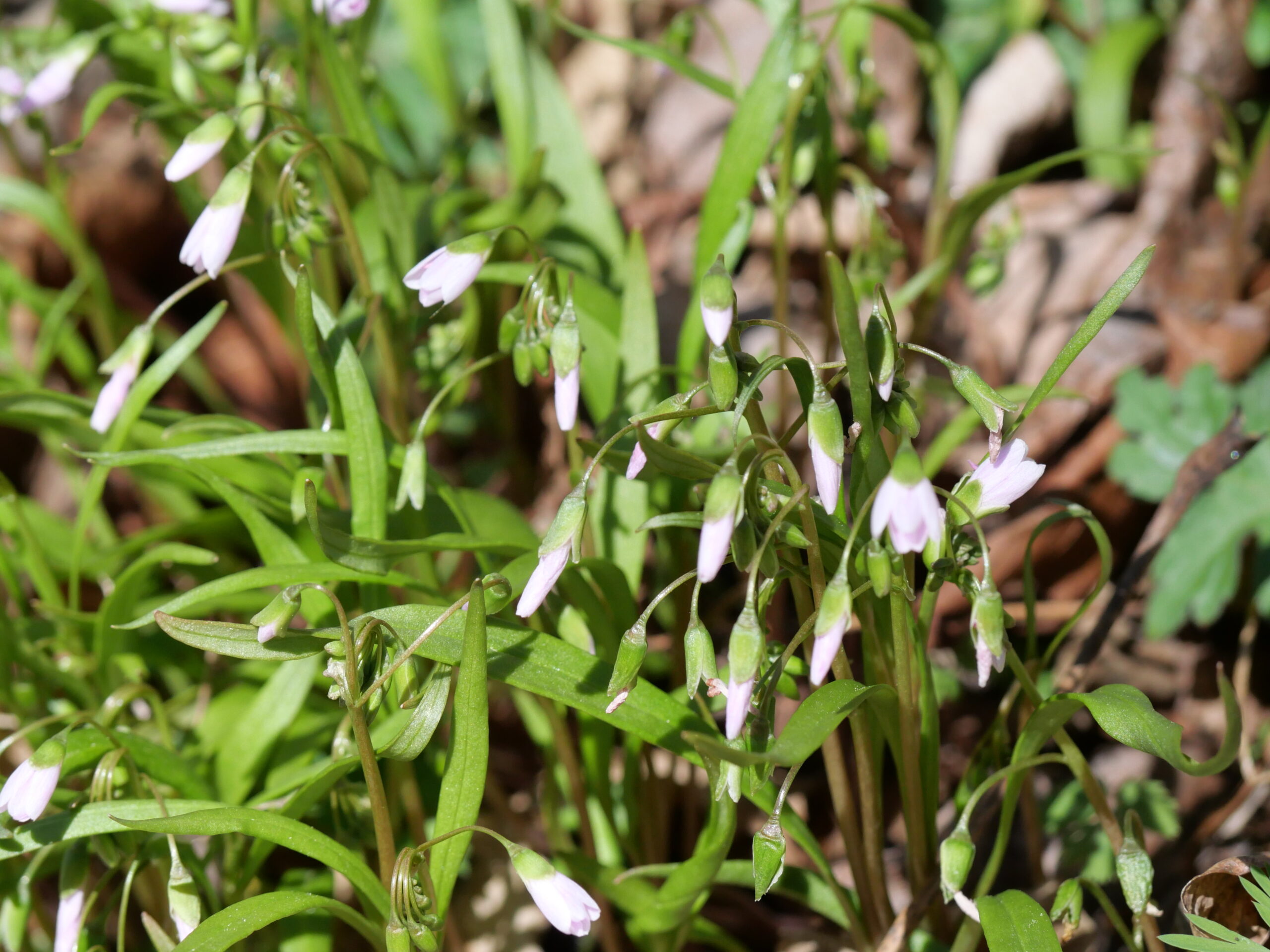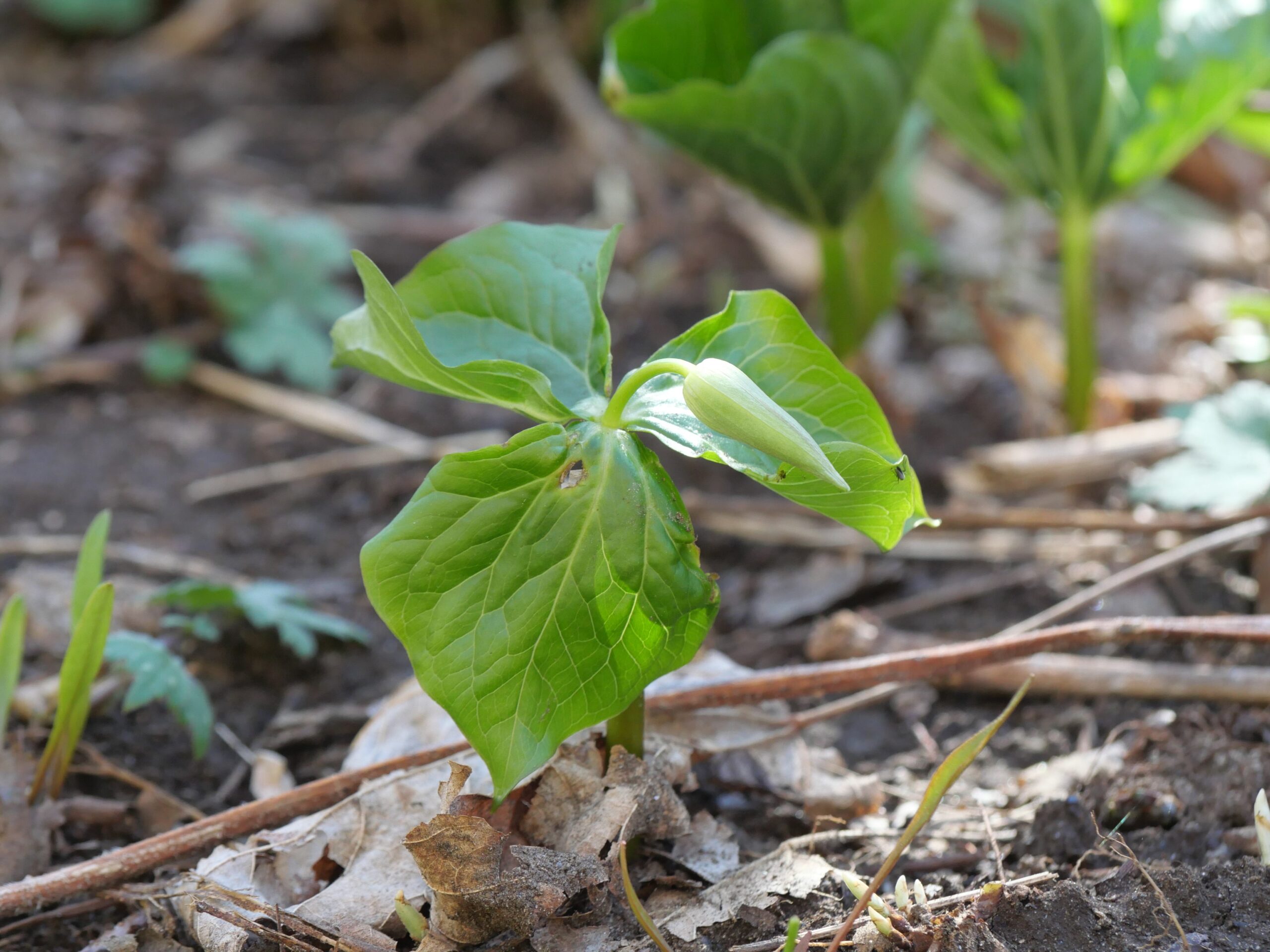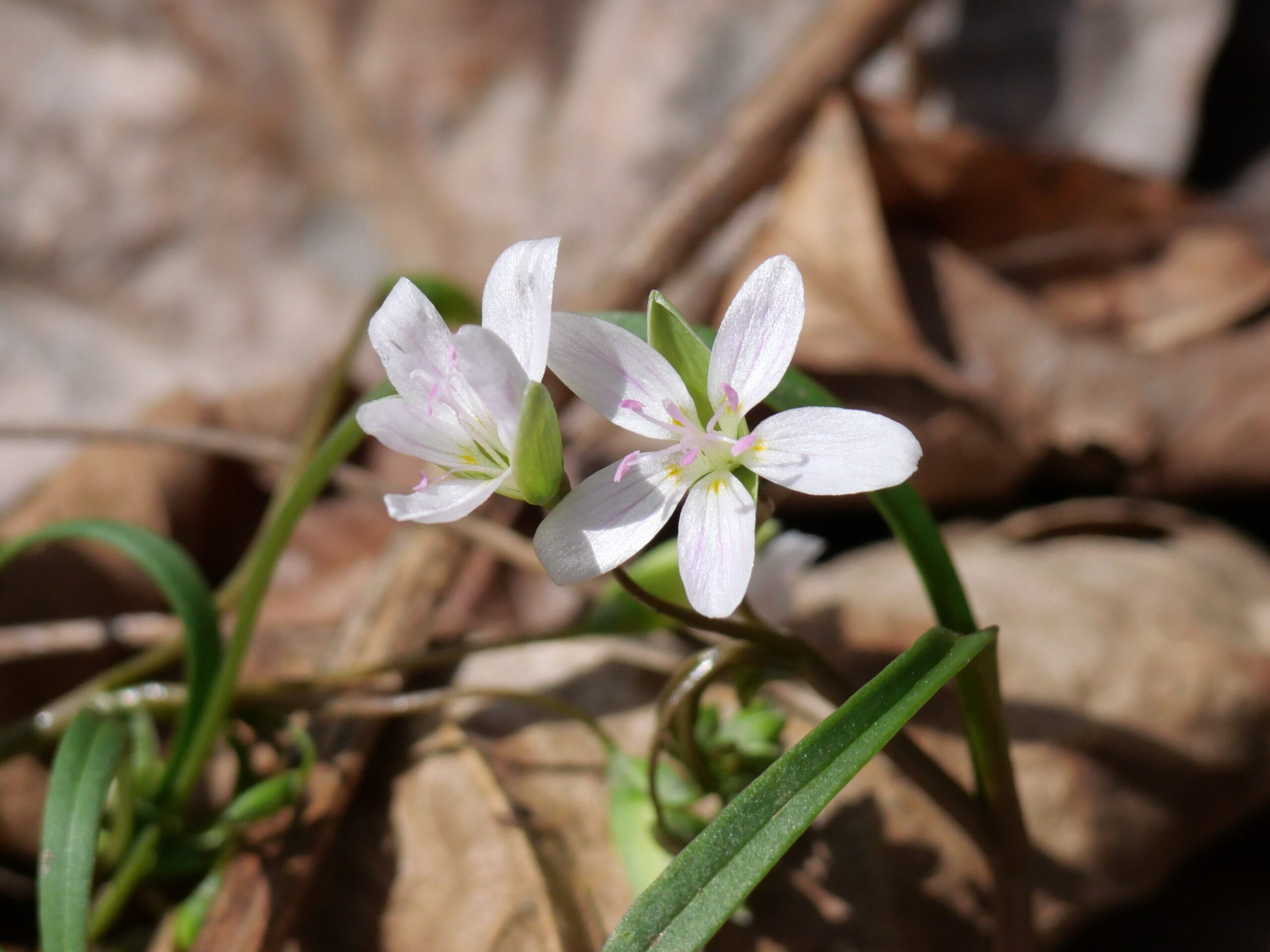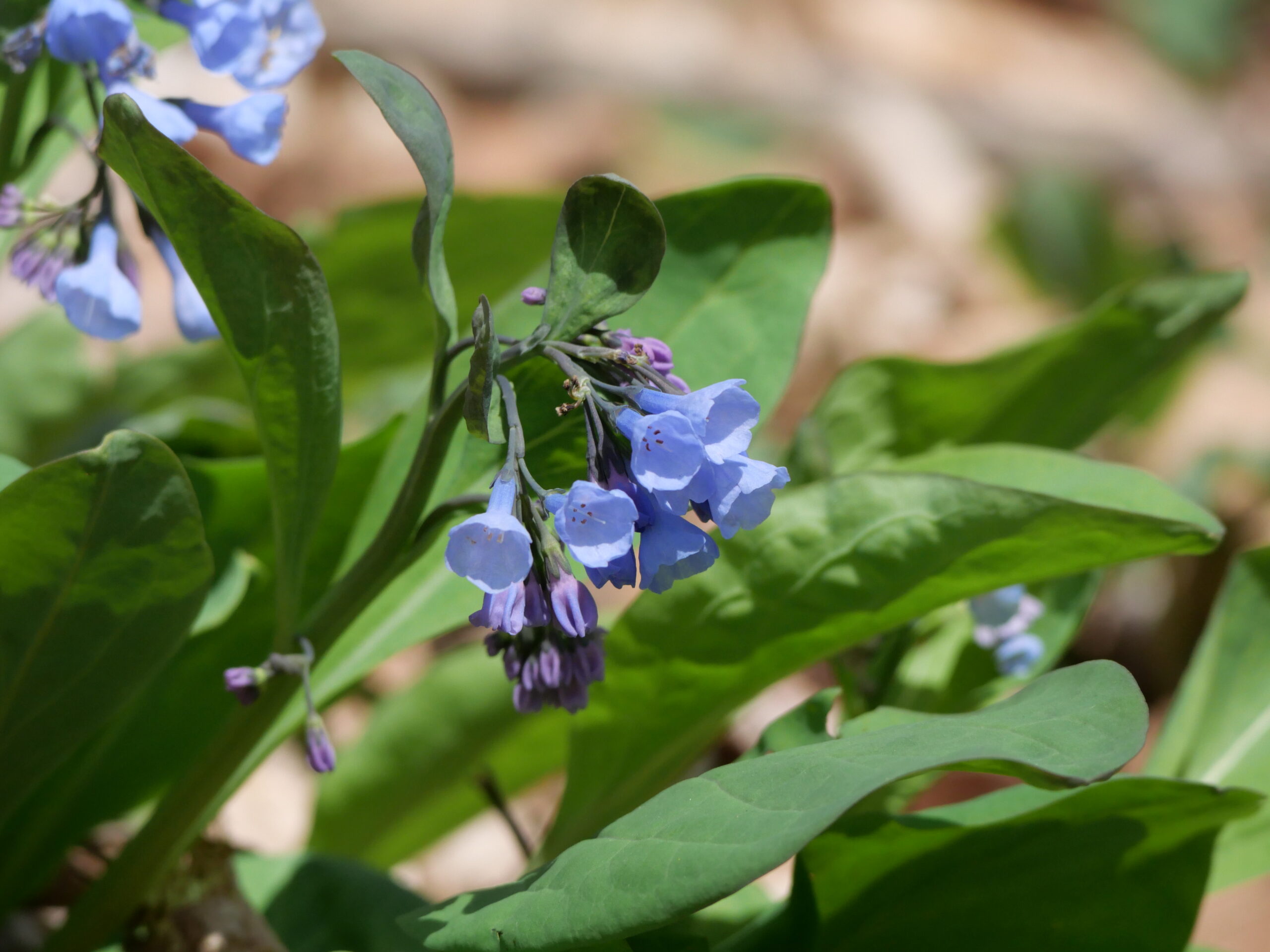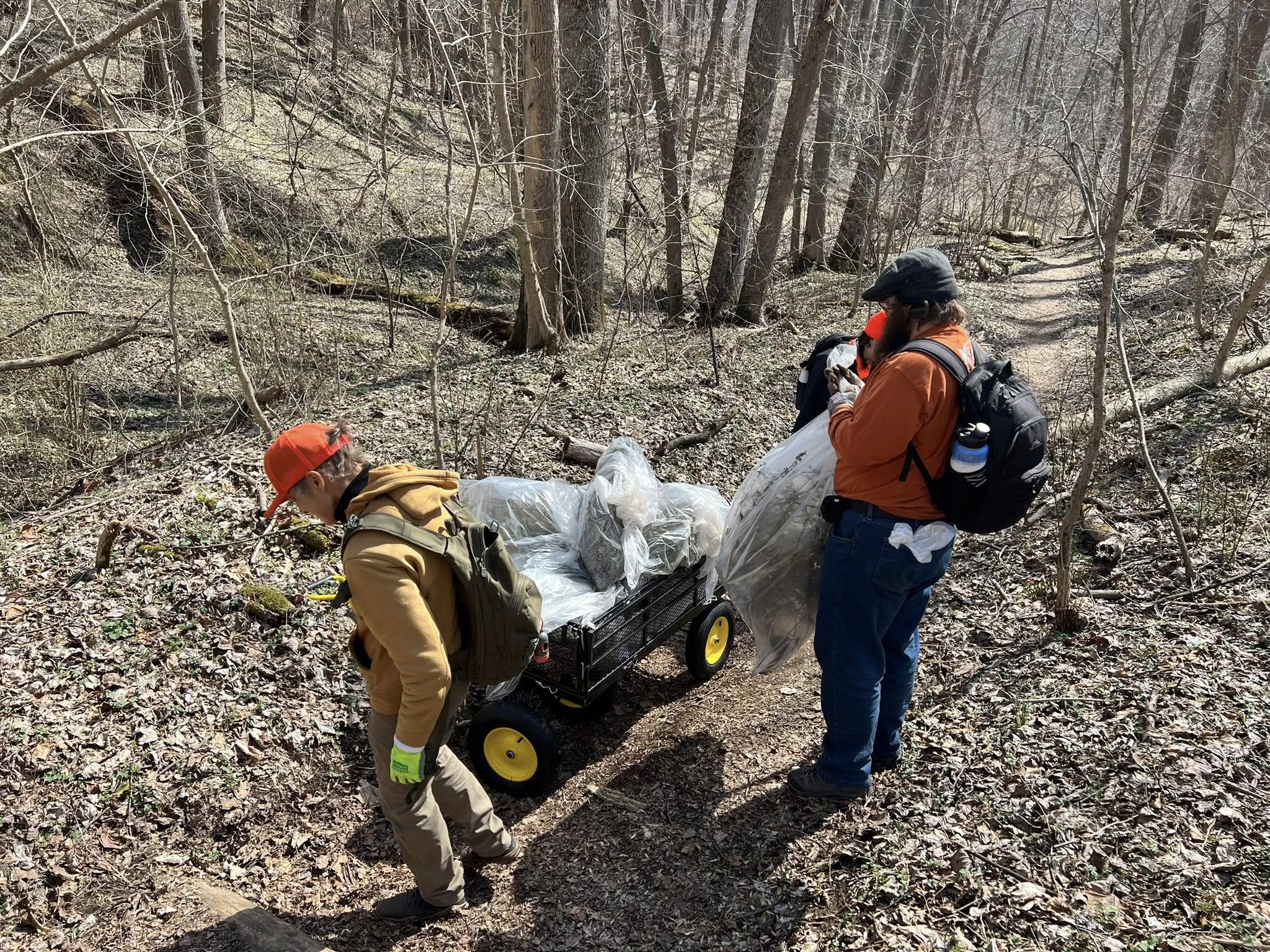By Avery Van Etten, Lancaster Conservancy Marketing & Communications Manager
With dozens of different species of wildflowers that bloom at the beginning of spring, Shenks Ferry Wildflower Preserve is a Lancaster County gem with regional renown. These wildflowers, known as spring ephemerals for their short bloom time, flower for just a handful of weeks when the weather starts to warm up before the trees get their leaves and block sunlight from reaching the forest floor.
April 16, 2025
Shenks Ferry is alive with a beautiful array of wildflowers! This week, look for Virginia bluebells, trillium, woodland phlox, Dutchman’s breeches, squirrel corn, spring beauties, cutleaf toothwort, saxifrage, blue cohosh, and violets. The red columbine are starting to appear, and I spotted some buds on a couple mayapples. Also beginning to appear are false Solomon’s seal and golden ragwort. Now is a fantastic time to visit this special nature preserve!
You may also spot some invasive flowers at Shenks Ferry this week, such as star-of-Bethlehem and celandine. These species are considered invasive because they did not originate in this area, and they threaten to outcompete native species like the spring ephemerals. Learn more about invasive plants in this blog.
April 10, 2025
The wildflowers are popping at Shenks Ferry this week! I’d say we’re probably in the midst of peak bloom at the nature preserve, despite the colder weather at the beginning of the week. There are Virginia bluebells everywhere and lots of trillium blooming. Also flowering are spring beauties, Dutchman’s breeches, blue cohosh, saxifrage, and multiple species of violets.
Newly blooming this week are cutleaf toothwort, phlox, and squirrel corn. Mayapple leaves are abundant, especially toward the beginning of the Gamber Wildflower Trail, although they haven’t gotten their flowers yet. A couple early red columbine emerged this week, as well.
Want to see wildflowers but avoid the busyness of Shenks Ferry? Looking for a new place to enjoy spring flowers? Check out this blog on other Lancaster Conservancy preserves where you can see wildflowers!
April 3, 2025
There are lots of Dutchman’s breeches blooming at Shenks Ferry this week. Many of the Virginia bluebells have opened up, with many more still buds waiting to bloom. The hillsides are turning purple! Also continuing to bloom this week are spring beauties, blue cohosh, and a small patch or two of saxifrage.
A patch of yellow trout lilies – named for their spotted leaves that look reminiscent of a trout – sprouted up this week. A few trillium have opened up this week, as well, and I spotted lots of trillium buds along the trail that will be open soon. The umbrella-like leaves of the mayapples began to show this week, too, although they are not flowering just yet.
March 28, 2025
Dutchman’s breeches are the dominant wildflower blooming at Shenks Ferry this week. They look like rows of pants hanging upside down on a clothesline, and their white-and-yellow flowers dapple the hillside along the Gamber Wildflower Trail. If you look carefully, you might also spot some Dutchman’s breeches that have a pink tint.
There is also a patch of bloodroot blooming this week, as well as some blue cohosh. I spotted one tiny patch of saxifrage blooming on the side of a rock, as well. There are still some spring beauties blooming, although I saw fewer of them this week than last week.
The Virginia bluebells are still mostly buds and clusters of leaves, but it won’t be long until they flower. There are also many trillium buds along the trail that will be open soon!
March 20, 2025
This week, the spring beauties and bloodroot are blooming! Dutchman’s breeches are also beginning to bloom, and I spotted some with tiny new buds just starting to open and some with full flowers. The Virginia bluebells are almost ready to pop – I saw one flowering and many more clusters of bluebell leaves, several with purple buds peeking out.
Dutchman’s breeches have a special relationship with queen bumblebees. The queen is the only member of her colony to survive the winter after being mated in the fall, and she emerges hungry when the weather warms up. The queen bumblebee uses her long proboscis to get nectar and pollen from the Dutchman’s breeches, at the same time helping to pollinate the flower. The plant provides her with the fuel she needs to create her new nest.
Another flower you might see at Shenks Ferry this time of year is scilla. Although these little purple-blue blooms are pretty, they are actually non-native and have the potential to outcompete the native wildflowers. Non-native plants are not necessarily invasive – sometimes they become naturalized into an environment and can co-exist with the native species there without doing harm. Non-native species become invasive when they start outcompeting native ones, often leading to a reduction in biodiversity.
The Conservancy’s stewardship team and volunteers are constantly working to mitigate invasive species on our nature preserves to support healthy, biodiverse, resilient ecosystems. You can join these efforts by participating in a volunteer workday or becoming a Volunteer Land Steward! Learn more at lancasterconservancy.org/volunteer.
March 13, 2025
It has begun! The spring beauties have started to emerge at Shenks Ferry Wildflower Preserve this week, and the Virginia bluebells are beginning to bud as well. Soon the preserve will come alive with a stunning display of spring ephemeral wildflowers.
 Spring beauty (Photo by Keith Williams)
Spring beauty (Photo by Keith Williams)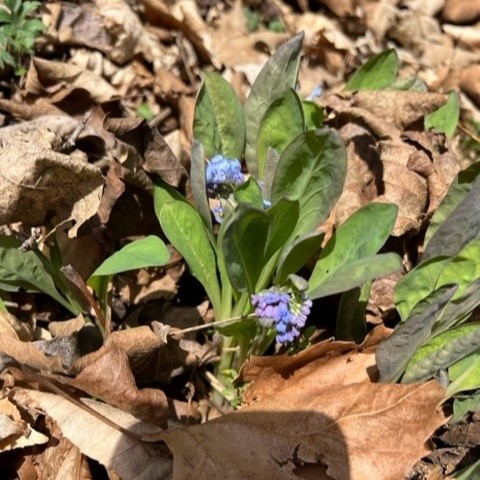 Virginia bluebell (Photo by Keith Williams)
Virginia bluebell (Photo by Keith Williams)Check out last year’s spring ephemeral updates to get a sense of the order in which the flowers typically bloom, and study up on our spring ephemerals with this Nature Hour presentation by the Conservancy’s Vice President of Engagement & Education Keith Williams:
Know Before You Go
If you’re visiting Shenks Ferry Wildflower Preserve, there are a few things you should know to make sure you — and the wildflowers — have the best experience possible.
1. Visit during the week
Shenks Ferry is very busy during spring weekends, so visiting on a weekday can mean fewer people and more space to enjoy the flowers.
2. Leave No Trace
When you visit Shenks Ferry, take nothing but pictures and leave nothing but footprints! Please stay on the trail so you don’t trample any flowers, and make sure you remove any waste you bring onto the preserve. Learn more about Leave No Trace principles here.
3. Know what you’re looking at
Want to identify the flowers you’re seeing? Download the Shenks Ferry Wildflower Preserve brochure! It details some of the most common spring ephemerals found at Shenks Ferry. You can also use an app like Seek by iNaturalist to help identify plants you see around the preserve.
4. Where to park
Please enter the preserve via Shenks Ferry Road, which will take you to the improved parking area and access trail. Green Hill Road south of the preserve is closed, which may not be reflected on GPS programs like Google Maps.
5. Group visits
Planning to organize a group visit to Shenks Ferry? Events on Lancaster Conservancy preserves (formal or informal groups of 15+ individuals or 5+ vehicles) require Conservancy approval. Learn more and fill out the event notice form here.
6. Support the stewardship of Shenks Ferry
Caring for this special wildflower sanctuary is an ongoing effort. Your support of Lancaster Conservancy allows for the continued careful stewardship of Shenks Ferry for the benefit of both nature and our community. Thank you for considering making a donation to ensure this special place is here for generations to come.
Thank you to our generous sponsor Brookhills Investment Group for making educational programming about Shenks Ferry Wildflower Preserve and the native plants it protects possible.
